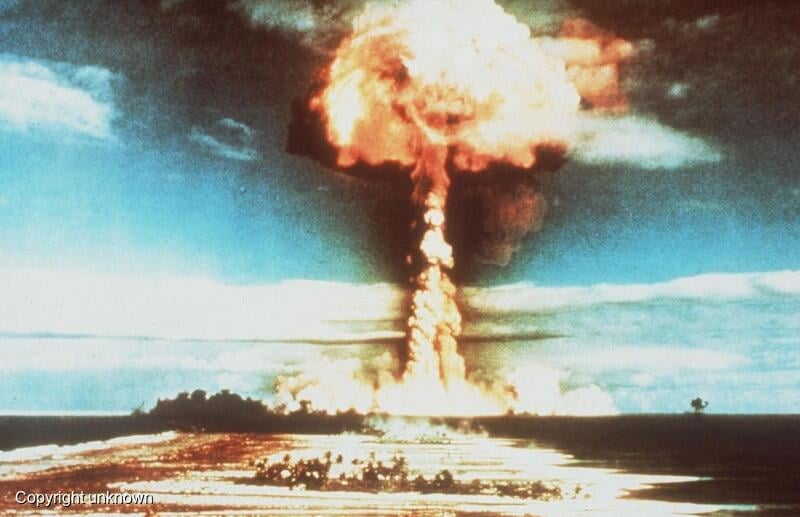For fifty years, Greenpeace has been making waves here in Aotearoa. This year marks our 50th anniversary. Generations of activists have spoken truth to power under the Greenpeace banner. At sea and on land, with creative confrontation, investigations, savvy communications and direct action, together, we have fought tirelessly to protect the planet and promote peace.
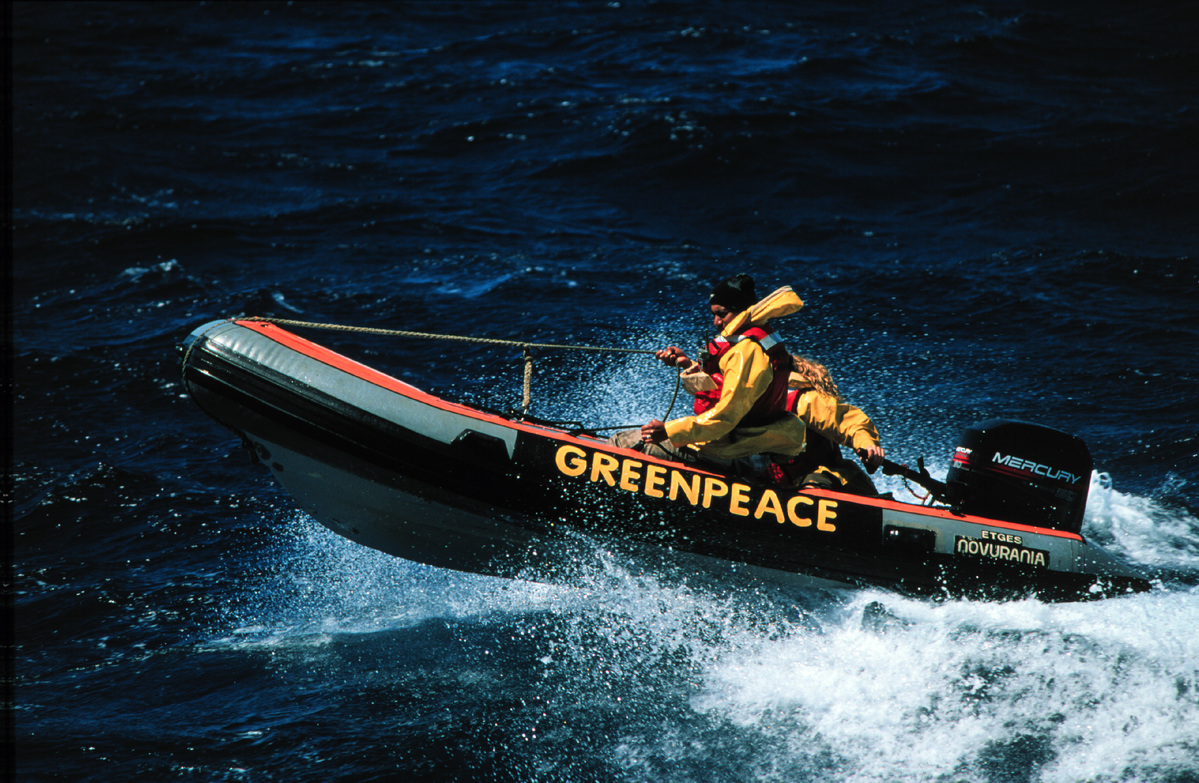
They say that once you’ve been with Greenpeace, you never really leave, and in many ways, it’s true. Here I am, 25 years since I last worked at the Auckland HQ, penning a piece for the website.
Greenpeace has been an incredibly effective and impactful organisation in Aotearoa and around the world, and as the organisation marks five decades since registering as a charity in Aotearoa, the job we do is more crucial than ever. The world faces accelerating habitat destruction and a deepening climate emergency. And here in Aotearoa, the sense of ecological crisis has recently been intensified by the arrival of a new National-led Coalition Government that brazenly wears its anti-environment heart on its pin-striped sleeve.
So, now, in Greenpeace’s semi-centennial year, it’s timely to look back at past campaigns to learn from previous successes and look forward to new ones.
Table of contents
- The Pacific Peace Odyssey
- A motley crew
- Ban the Bomb and Save the Whales
- From the Antarctic to the Wall of Death, driftnet fishing
- World Park Antarctica
- You can’t sink a rainbow
- Climate justice
- Fonterra climate crimes
- No mining Pure NZ
- Defending the deep from bottom trawling
- GE Free NZ
- Save the rivers and healthy water for all
- Making oil history
- Cameras on boats
- The War on Nature
- Toitū Te Tiriti
- 50 years of wins for people and planet
- Now more than ever
The Pacific Peace Odyssey
Greenpeace began in Aotearoa as a loose grassroots network that formed to support the first protest voyages against the French Government’s nuclear weapons ‘testing’ at Moruroa Atoll in Tahiti Nui, French Polynesia, in 1972 and 1973. Because the nuclear warheads were detonated in the atmosphere, the tests resulted in deadly radioactive fallout raining down on eastern Polynesia and beyond.
A flotilla of small yachts initially led by Greenpeace III (a.k.a. SV Vega) first sailed from Aotearoa to Moruroa in 1972. The next year, Greenpeace III was joined by SV Fri, a larger wooden sailing boat. After these flotillas brought global attention to the dangerous tests, the French Government announced in 1973 that it would shift the tests underground.
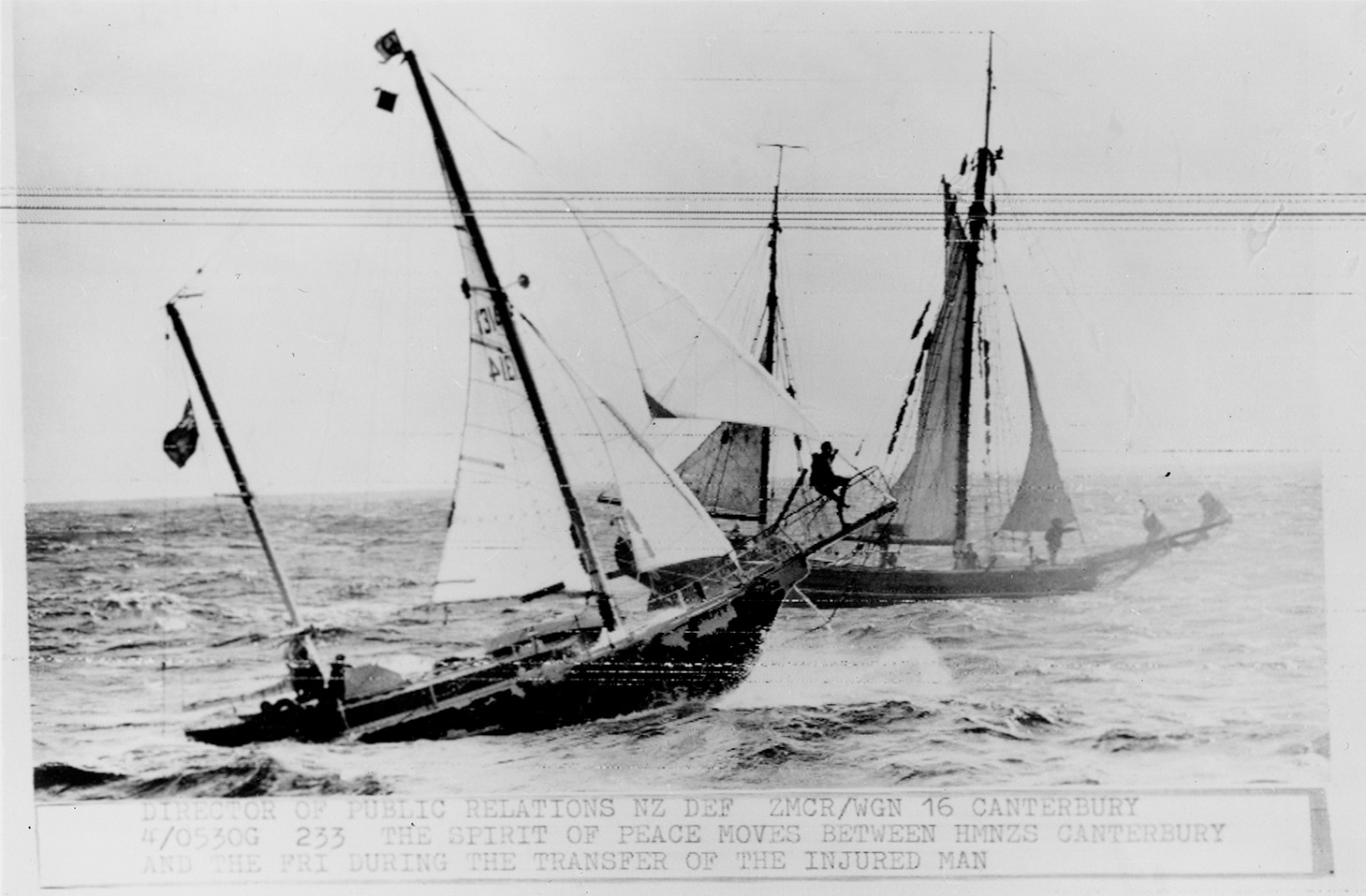
It was a victory of sorts, but inevitably, the underground tests would crack and shatter the rocks around them, and radioactive contamination would leak out into the lagoon and the ocean.
After the announcement, there was a mood among the grassroots network to broaden the focus of the campaign to all five nuclear weapons states and to promote a positive message of peace.
A motley crew
Much like the rag-tag group of mystics and mechanics that started Greenpeace in Canada by sailing out into the US nuclear test zone at Amchitca, here, too the rag-tag group that had gathered around the SV Fri and SV Vega combined the smell of engine oil with a whiff of patchouli oil. They were a diverse group, including hippies and sailors, students and teachers, idealists and pragmatists.

But this seemingly motley collection of volunteers was organised enough to register the name Greenpeace New Zealand as a charitable society in April 1974 and committed enough to fundraise to send SV Fri on a much longer “Pacific Peace Odyssey” across the planet.
Together, they made the necessary preparations in Tauranga before SV Fri embarked on the first leg of a new voyage, sailing from Wellington on 11 August to Tahiti and arriving there in Papeete on 7 September 1974. Their odyssey promoted a global ban on all nuclear weapons testing and involved distributing ‘Sowing the Seeds of Peace’ postcards carrying messages of peace from Kiwis to citizens and governments in the nuclear weapons states.
Over three years, SV Fri sailed 25,000 kilometres across the Pacific and Indian oceans to Tahiti, the Marshall Islands (a US Trust Territory), Hiroshima in Japan, Vladivostok in the Soviet Union (now Russia), the Yangtze River in China and Madras in India, to spread the word. Their voyage was in part sustained and coordinated by the fledgling Greenpeace New Zealand organisation in Aotearoa.
Ban the Bomb and Save the Whales!
During the early years, Greenpeace’s main goals were global bans on nuclear weapons testing and to save the whales by stopping commercial whaling! Both seemed like utopian ideals then, but Greenpeace had the growing power of public opinion on its side, and many governments were also prepared to pressure the French Government, including the Labour Government in Aotearoa led by Prime Minister Norm Kirk.
As both campaigns continued into the 1980s, Greenpeace New Zealand worked closely with its allies in the global Greenpeace movement and alongside Peace Movement Aotearoa, Campaign for Nuclear Disarmament (CND), Auckland Peace Squadron, Friends of the Earth, Project Jonah and others here in Aotearoa.
Greenpeace New Zealand helped to win a global moratorium on commercial whaling in 1983 by organising protests against whaling and helping to expose the role of the Pinochet dictatorship in Chile in allowing ‘pirate whaling’ outside of the International Whaling Commission.
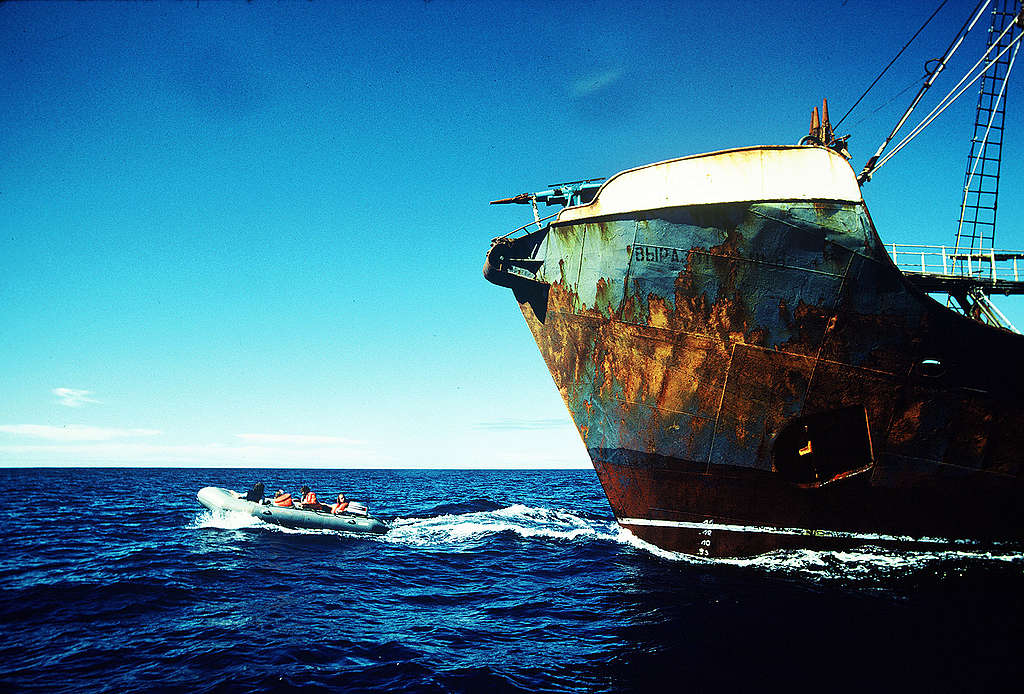
Greenpeace next sent SV Vega (formerly Greenpeace III) from Auckland to Tahiti and then on to protest at Moruroa Atoll in 1981 and 1982.
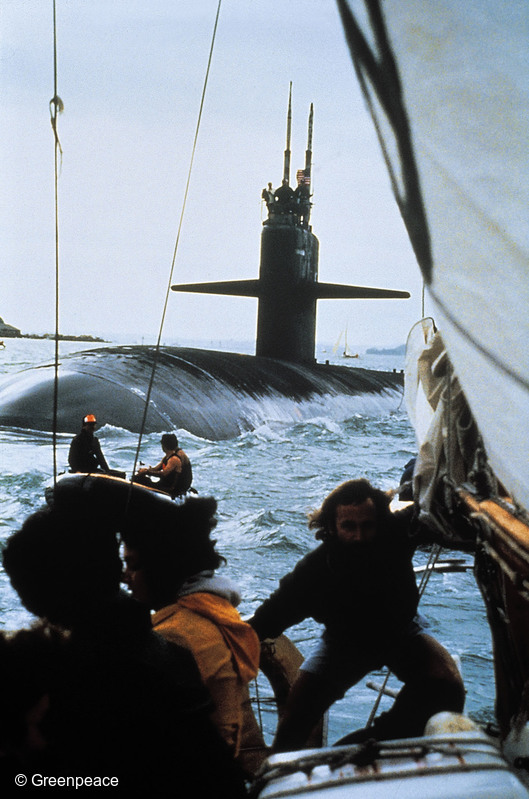
As nuclear issues came to dominate public debate in Aotearoa in the mid-1980s, Greenpeace also worked alongside its peace movement allies to campaign for a ban on all nuclear ship visits, including sending SV Vega to protest against the nuclear submarine USS Phoenix visiting Auckland in 1983.
After years of sustained peaceful direct-action protests that tried to stop visits by US and UK nuclear-armed and nuclear-powered warships, the Labour Government led by Prime Minister David Lange passed the Nuclear-Free Zone, Disarmament, and Arms Control Act in 1987 which established a nuclear-free zone in New Zealand, banning all nuclear-armed and nuclear-powered warships from visiting New Zealand.
From Antarctica to ‘Wall-of-Death’ fishing
Greenpeace New Zealand also initiated new campaigns to protect Antarctica from mining and oil exploitation and to end the global ‘wall-of-death’ driftnet fishing industry with its indiscriminate slaughter of non-target dolphins, sharks and turtles. Both became iconic campaign wins for Greenpeace.
Greenpeace New Zealand took its Antarctic campaign proposal to Greenpeace International in 1983, which resulted in Greenpeace International agreeing to help fund Greenpeace New Zealand to start the campaign.
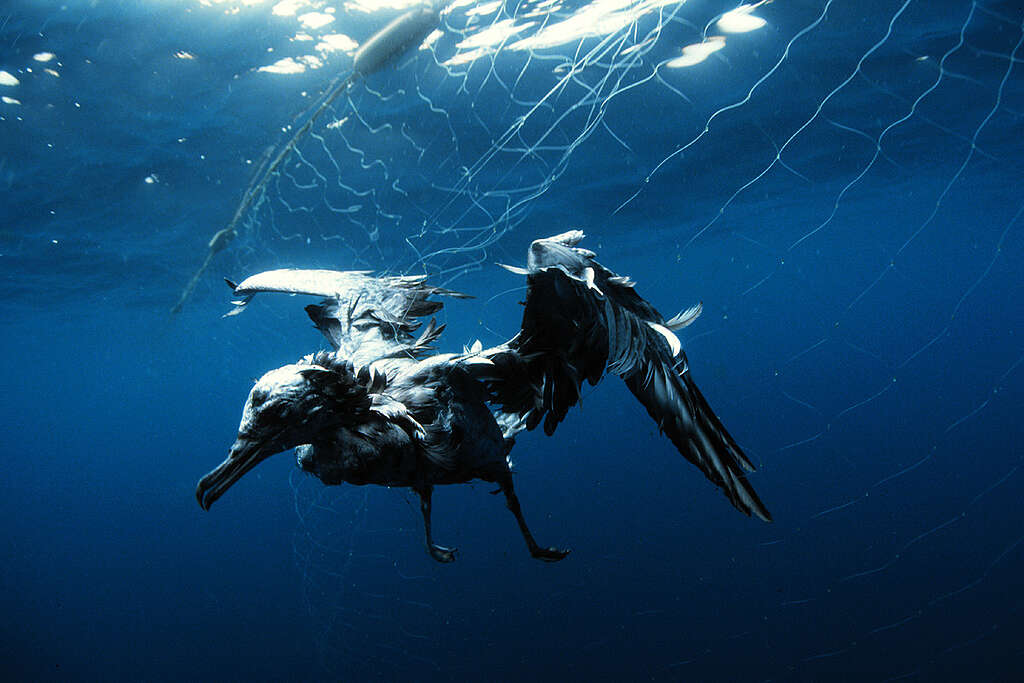
Greenpeace New Zealand began campaigning to ban driftnet fishing in 1989, branding it ‘wall-of-death’ fishing. SV Rainbow Warrior II sailed from Auckland into the Tasman Sea to search for and document the devastating death toll caused by driftnet fishing. Five days out, they found the first driftnet and were able to take photographs and video footage showing the appalling death toll of non-target dolphins, marine turtles, and sharks killed by the driftnets – some of which were known to be up to 60km long.
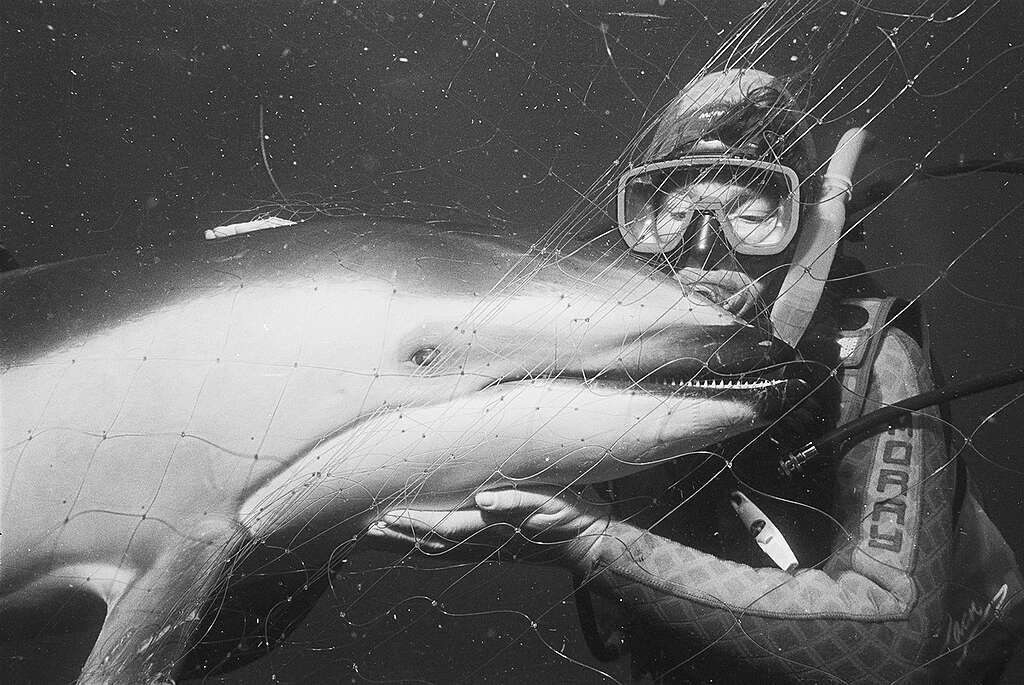
Shocking photos and footage were sent to news media around the world and widely published here and overseas, ensuring the issue received mass coverage. Another classic example of bearing witness to deliver a ‘mind bomb’.
After that, Greenpeace New Zealand met with Prime Minister Geoffrey Palmer to show him the impact of large-scale driftnets on marine wildlife. His response was to say, “I am going to tell my officials to do something about this.”
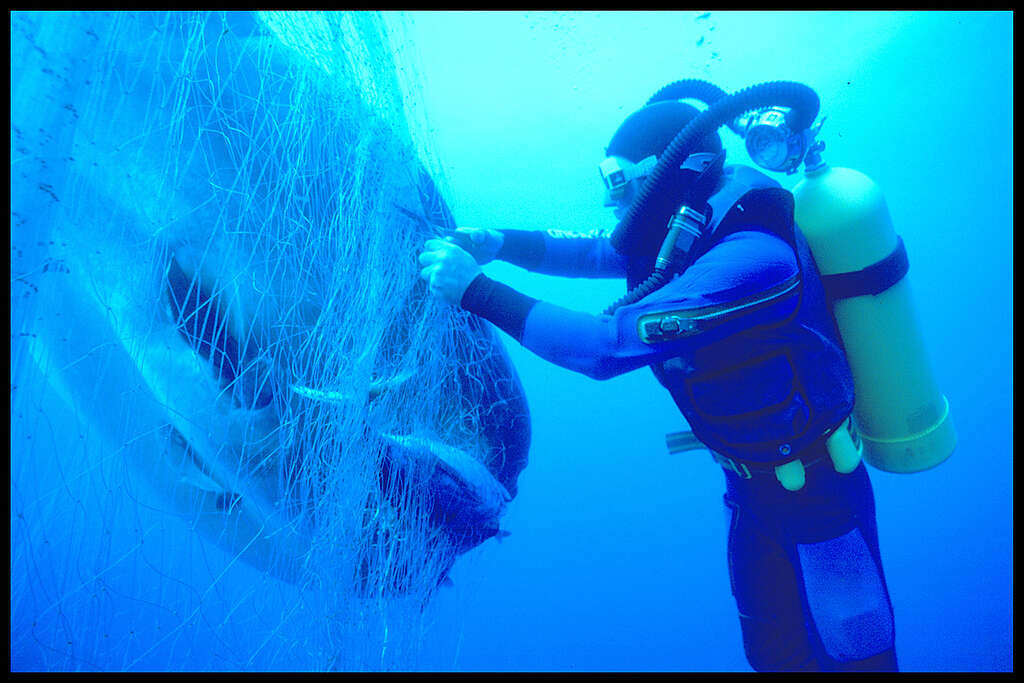
He later invited a Greenpeace New Zealand representative to attend the UN General Assembly (UNGA) in New York in September 1990 to promote New Zealand’s proposal for a global ban on driftnet fishing on the high seas. That led to a new UNGA resolution in 1991, and then in 1992, the UNGA voted to ban the use of all driftnets longer than 2.5 km on the high seas.
State violence
Some campaign victories came as a result of years – sometimes decades – of persistent peaceful protest, even though Greenpeace’s campaign activities were sometimes met with state violence. Infamously, Greenpeace’s flagship, SV Rainbow Warrior, was bombed and sunk by French government secret agents in downtown Auckland on 10 July 1985, killing on-board photographer Fernando Pereira shortly before the boat was due to depart for Tahiti to help rally opposition to the tests and then head to protest at Moruroa Atoll.
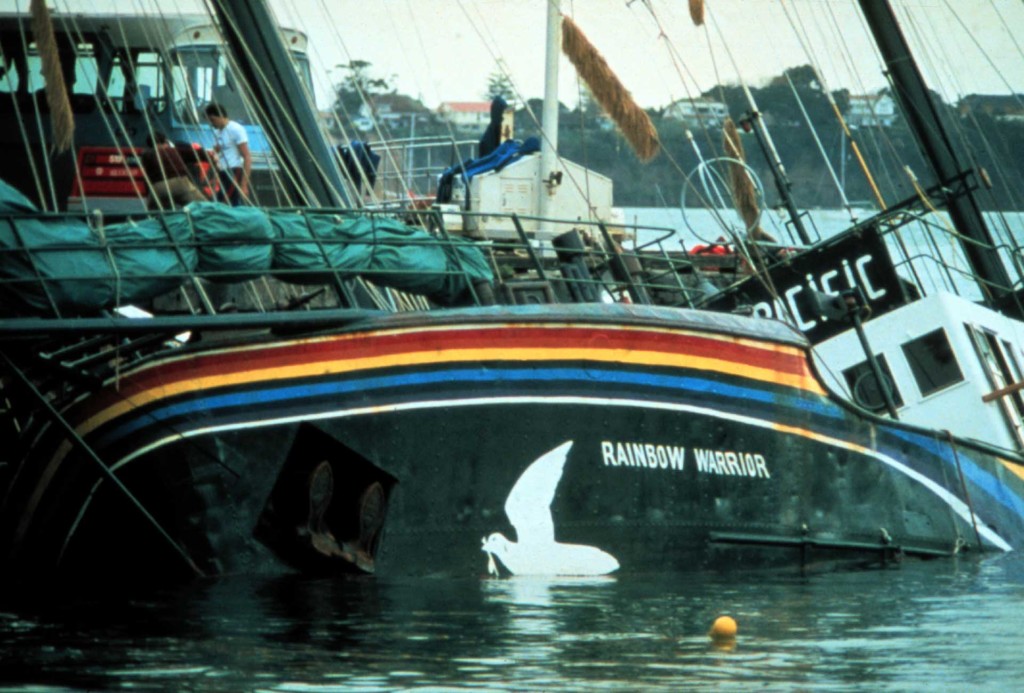
A team of Greenpeace penguin protectors was assaulted in 1989 by French military officers at Dumont D’Urville in Antarctica as they tried to stop the destruction of a series of islands where Adelie Penguins bred to make way for a new French government airstrip there. The French Navy rammed SV Rainbow Warrior II at Moruroa Atoll in 1995 before armed French commandos stormed the Greenpeace flagship and assaulted crew members and campaigners on board.
World Park Antarctica and a Southern Ocean Whale Sanctuary
Undeterred, both campaigns continued. Greenpeace set up and ran its own World Park Base in Antarctica from 1987-1992 and organised annual boat tours from Aotearoa to inspect coastal Antarctic bases, publishing reports exposing poor environmental management at many of them, including the poor management of radioactive waste from the US decommissioned nuclear power station at McMurdo Base. In Aotearoa, Greenpeace organised two nationwide ‘Rolling Snowball’ tours to help mobilise public support for a World Park in Antarctica, culminating in a mass rally outside Parliament. During the rally, Prime Minister Geoffrey Palmer announced the government would end its support for mining in Antarctica and instead back a World Park.
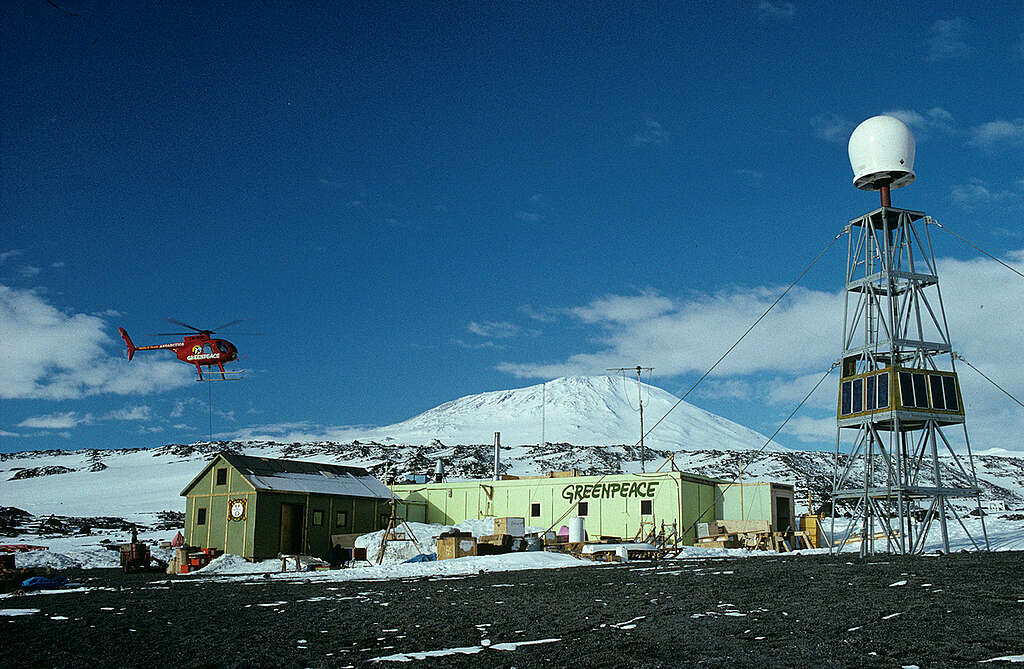
In the face of massive global public pressure to protect Antarctica, the Antarctic Treaty nations finally agreed to protect the ice continent from mining and oil exploitation in October 1991. That was followed a few weeks later by new protections for Southern Ocean seabirds enacted by the Commission for the Conservation of Antarctic Marine Living Resources (CCAMLR) in Hobart, requiring all fishing vessels to use bird-scaring lines and prohibit fishing vessels from discharging fish offal into the water within the huge Southern Ocean CCAMLR zone to reduce the number of seabirds killed. These measures were adopted after Greenpeace tabled photographic evidence it had gathered that showed albatrosses were being killed by the Soviet industrial longline fishing fleet in the CCAMLR, which it had gathered earlier in 1991 during an Antarctic expedition by Greenpeace’s ice-class MV Gondwana.
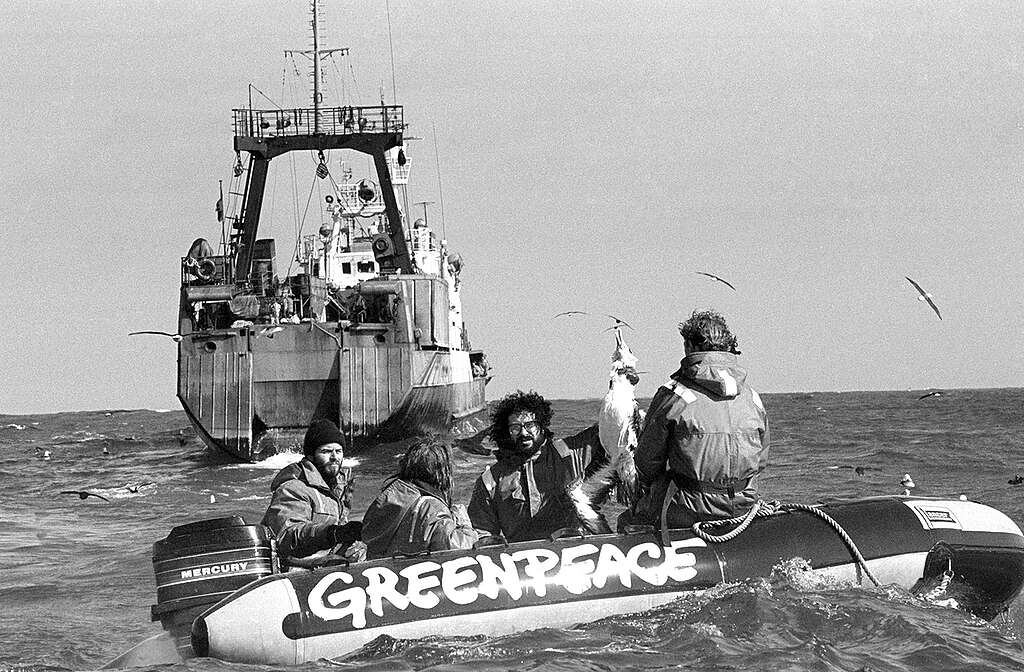
Then in 1994 the French Government abandoned the new airstrip it had built at Dumont D’Urville in Antarctica, and a 50 million square kilometre Southern Ocean Whale Sanctuary was agreed, which Greenpeace had campaigned for, including peacefully confronting Japanese government whaling ships operating in the South Ocean, and touring New Zealand to ask mayors to sign-up to support the Sanctuary.
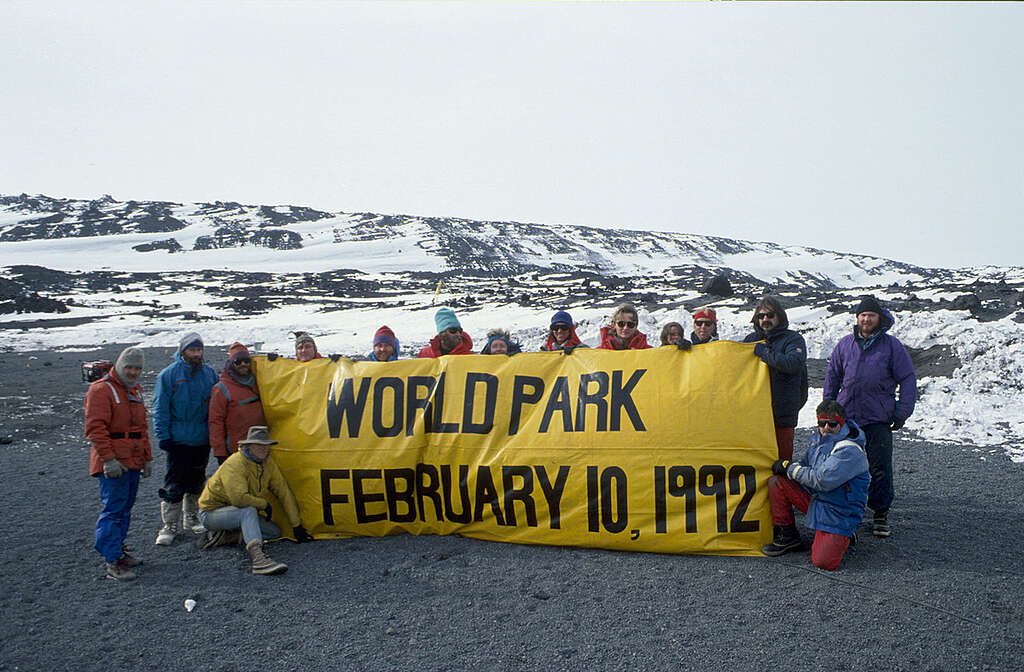
You can’t sink a rainbow
After the bombing and sinking of SV Rainbow Warrior and the death of Fernando Pereira, a New Zealand police investigation led to the arrest and imprisonment of two French government secret service agents (Alain Mafart and Dominique Prieur) who were part of a larger French team that carried out the bombing. The United Nations brokered an arbitration process between the French and New Zealand governments and then in 1987, France was ordered to pay compensation to Greenpeace and the family of Fernando Pereira. Part of the compensation was used to build a bigger and more modern replacement boat, SV Rainbow Warrior II, to continue the mission of the original SV Rainbow Warrior.
Greenpeace continued to grow in Aotearoa after 1985 and was able to start employing its first full-time campaigners and professional staff to run its growing operations. The Greenpeace office in Auckland became an international hub. Greenpeace was, by now, a large organisation in North America and Europe, which meant that Greenpeace International was able to fund a new Pacific campaign and annual Antarctic expeditions, both of which were based out of the same Auckland office.
SV Rainbow Warrior II was launched in 1989, and after sailing to Auckland, it continued on to Tahiti and to protest at Moruroa Atoll several times between 1990 and 1992. Shortly after its campaign at Moruroa in April 1992, French President Francois Mitterand agreed that France would join the nuclear testing moratorium initiated by Soviet President Mikhail Gorbachev the previous year. In 1994, the USA and UK joined the moratorium. But when new French President Jacques Chirac was elected in 1995, he shocked the world by breaking the moratorium and resuming French nuclear weapons testing at Moruroa Atoll.
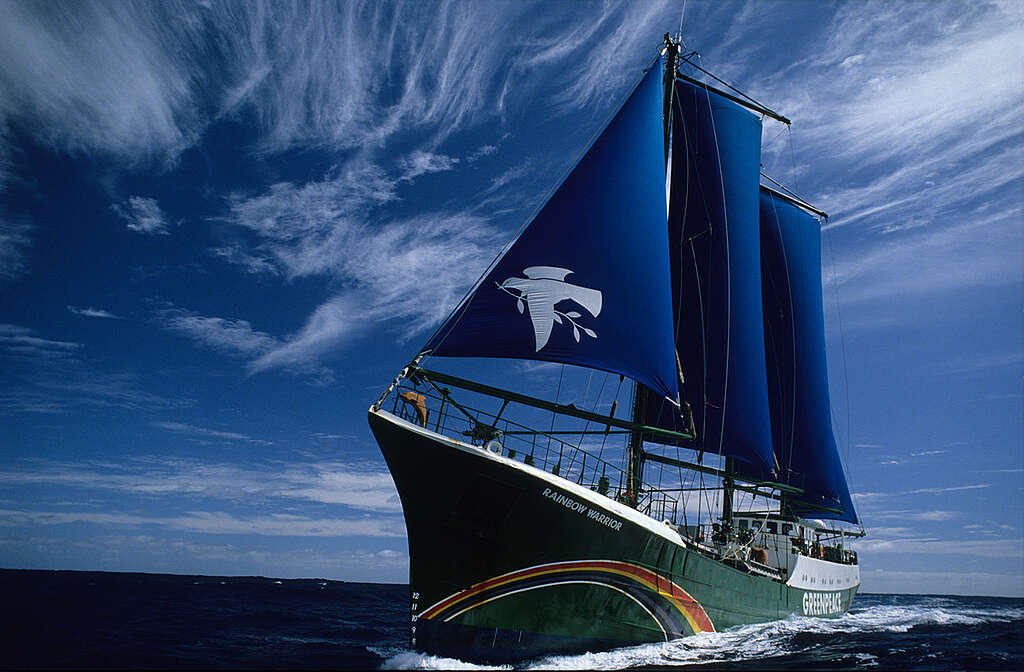
Greenpeace immediately revived its campaign and SV Rainbow Warrior II sailed from Auckland to Moruroa to protest with over 30 other boats in a new Flotilla that included a large Vaka sent by the Government of the Cook Islands, MV Greenpeace, and independent skippers from around the region. SV Rainbow Warrior II spearheaded the global campaign against the tests, which included Greenpeace offices around the world gathering 5 million signatures on a petition against the tests that was presented to the French Government in Paris.
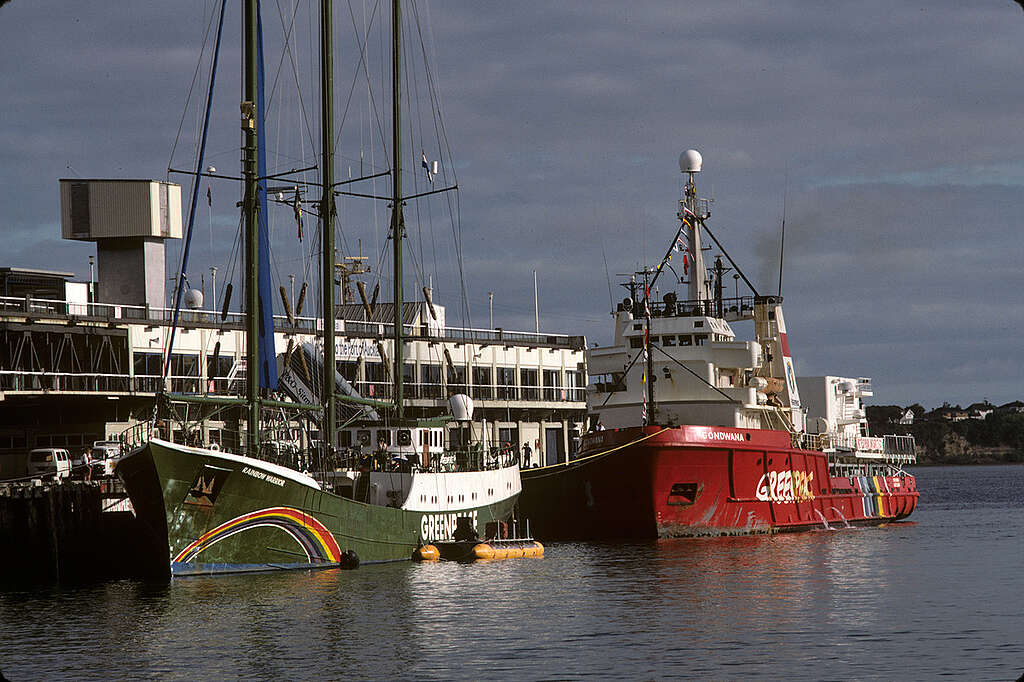
In the face of such huge opposition, including all MPs in the New Zealand Parliament and governments from the Pacific to Europe, President Chirac finally halted nuclear weapons testing at Moruroa Atoll in 1996. A global ban on nuclear weapons testing was agreed through the UN Comprehensive Test Ban Treaty a few months later, which was signed by all five nuclear weapons states on the UN Security Council (US, Russia, France, UK, China).
Campaigning for climate justice
Greenpeace New Zealand started a new campaign in Aotearoa in 1990 to protect the climate. The new campaign set out to stop new fossil-fuelled power stations being built, halt new oil and gas exploration, and take legal action on climate change through the 1991 Resource Management Act (RMA).
In 1992, the National Government led by Prime Minister Jim Bolger signed the UN Framework Convention on Climate Change (UNFCCC), which Greenpeace and other eNGOs had campaigned for over the previous two years.
Then, in 1993, Greenpeace successfully pers귭 the National Government to open up the RMA process for the Stratford gas-fired power station to include climate change considerations for the first time. Alongside other eNGOs and experts, a Greenpeace legal team made the case against the new power station at public hearings held in 1994. Disastrously, Environment Minister Simon Upton approved the power station in 1995 and the tree planting ‘carbon offsets’ promised never eventuated.
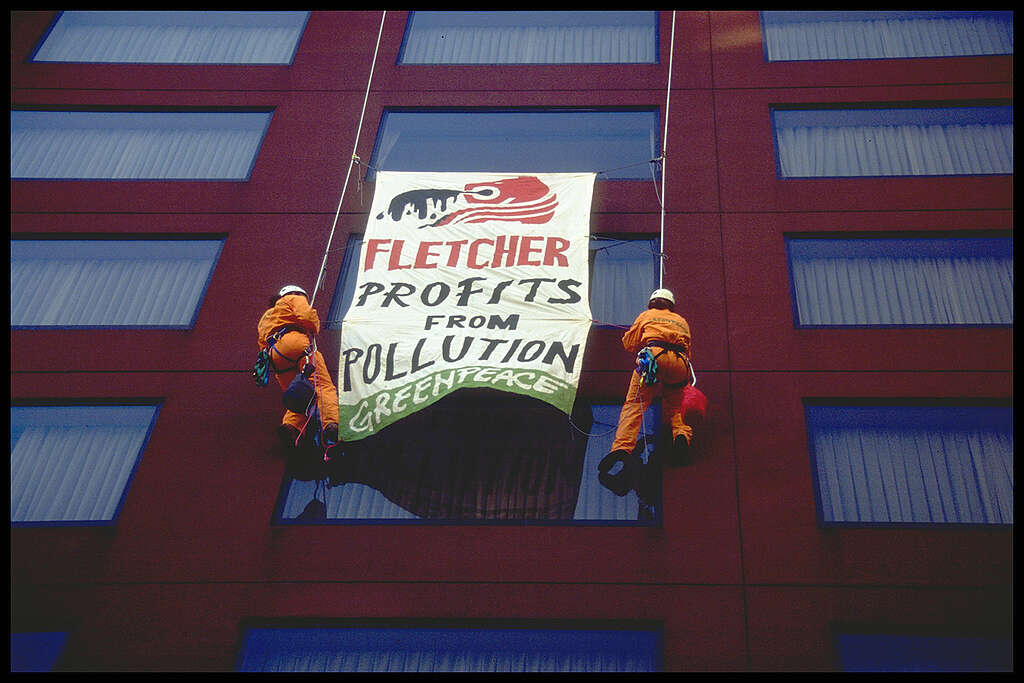
In 1997, two Greenpeace activists scaled 30-metre cranes to block the Stratford power station’s new generators from being unloaded in the Port of Taranaki, which drew high-profile media attention to the folly of building a new fossil-fuel power station at a time when the government had already signed up to the UNFCCC and pledged to cut carbon emissions 20% by the year 2000.
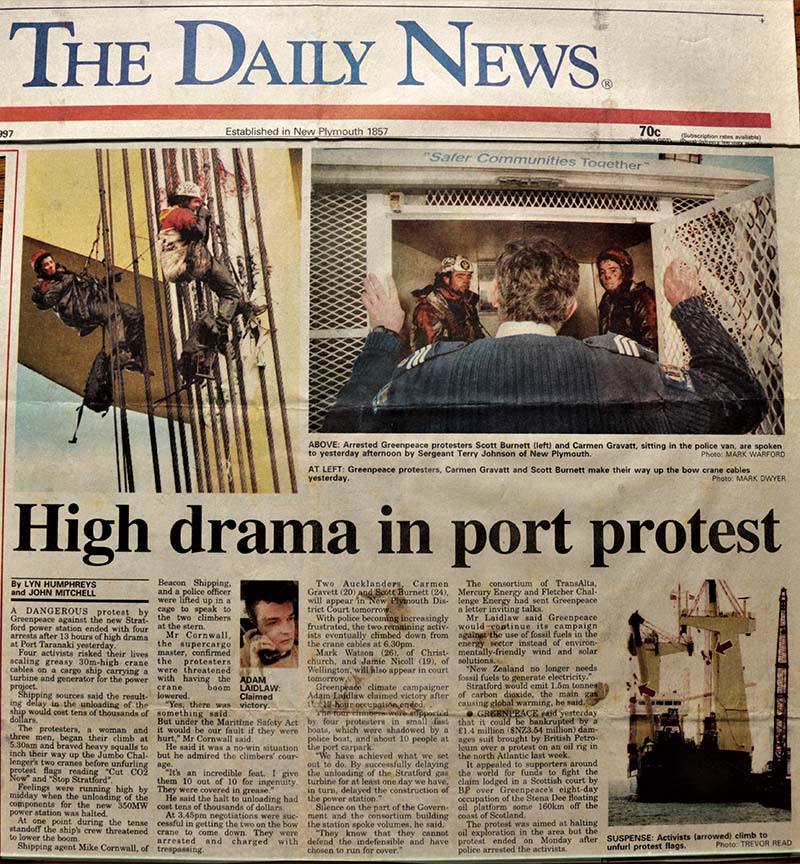
Then, in 1998, during SV Rainbow Warrior II’s tour of Aotearoa, activists unplugged Fletcher Challenge Energy’s seismic testing cables in Taranaki to stop it from carrying out seismic testing and delivered the cables to the company’s New Plymouth head office, calling for an end to new oil and gas exploration.
Promoting ‘brilliant solutions’ was the other arm of Greenpeace’s climate campaign, including promoting solar energy through touring a mobile Solar Café, rooftop protests at Parliament and Mercury Energy’s head office in Auckland calling for solarisation programmes, a Solar Pioneers project which saw thousands of Kiwis pledge to install solar water heating systems on their roofs, and the solarisation of Greenpeace’s own office in Auckland.
As the campaign continued into the 2000s, Greenpeace was successful in opposing two proposed new coal-fired power stations, one at Meremere in the Waikato (2000) and one called Marsden B in Ruakaka, Northland (2007). The Meremere proposal would have had a ‘double whammy’ because it was touted as a ‘waste-to-energy’ factory which would have burned vast quantities of household waste along with coal, belching out both carbon dioxide and toxic dioxin pollution. In both cases, Greenpeace worked as part of a wider people power movement opposed to the proposals.
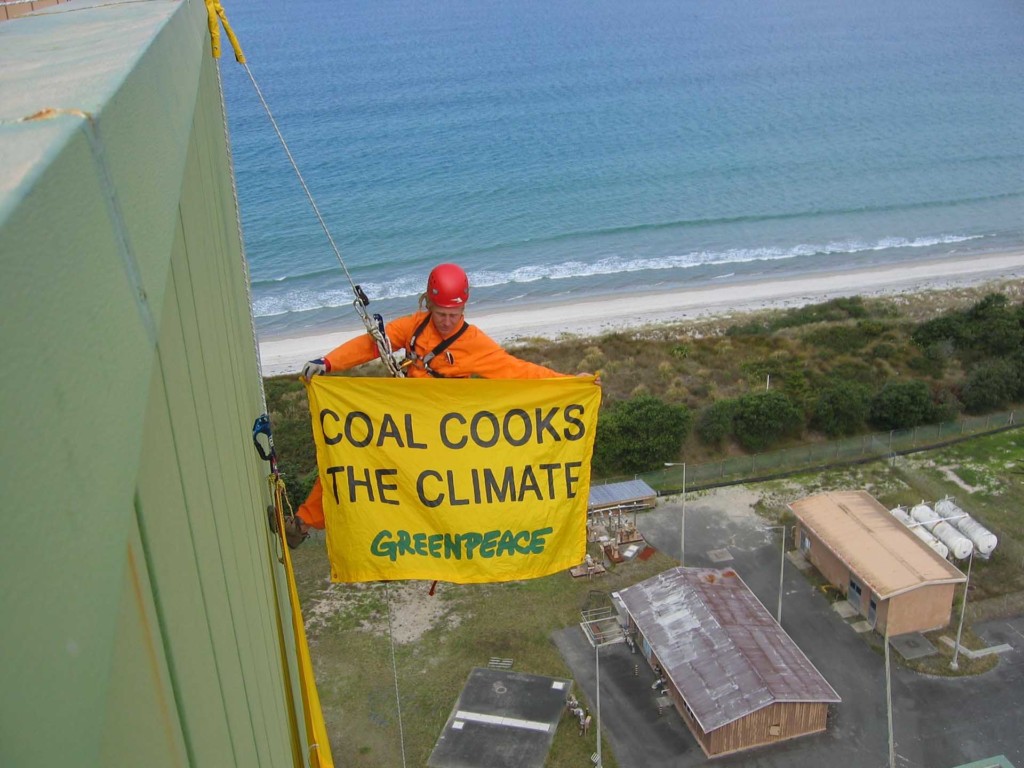
As public support for climate action grew, the Labour-led Coalition Government of Prime Minister Helen Clark passed an Emissions Trading Scheme (ETS) into law in September 2008, shortly before a new general election. The National-led Coalition led by Prime Minister John Key that came into office after the election immediately began reversing the climate action put in place by the previous government.
A group of high-profile Kiwis joined with Greenpeace in 2009 to launch a new online ‘Sign On’ campaign calling for stronger climate action from the new government, and for Prime Minister John Key to go to the Copenhagen climate summit. The campaign received the support of over 230,000 people, but the new government’s policies still fell far short of what was needed, including gutting the ETS. That sent a message to the international community that New Zealand now had a government that was not serious about tackling climate change.
Fonterra’s climate crimes
In 2009, a Greenpeace investigation exposed Fonterra’s role in supporting deforestation in Indonesia via its use of palm kernel for cow feed.
A small team from Greenpeace New Zealand spent two months in Indonesia delving further into Fonterra’s climate crimes.
They wanted to show New Zealanders the impact that Wilmar, RD1 and Fonterra were having in Indonesia. A small team travelled to Sumatra with an independent journalist and a New Zealand farmer, Max Purnell, and with local guides, went into the heart of the palm plantation country.
They met with two local leaders from the village of Kuala Mulia. Their lands were taken by the Indonesian Government, cleared, burnt and about to be planted in palm. The company responsible – Duta Palma which supplies palm to Wilmar.
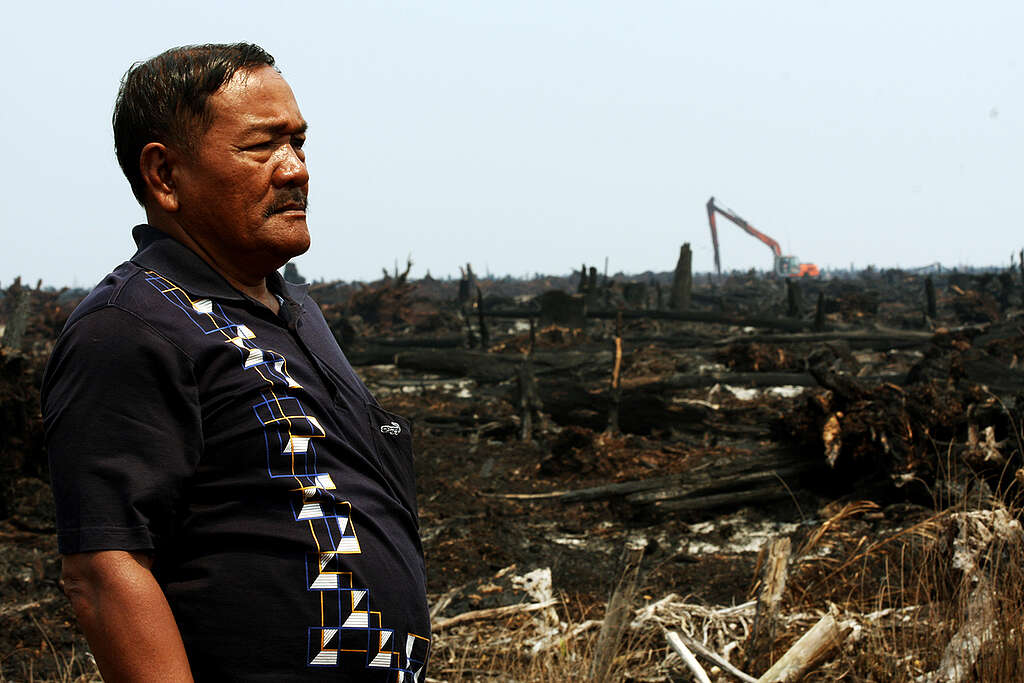
The images they brought back were shocking, and they brought the issue to national attention with a bang. They launched a campaign that confronted Fonterra’s many climate crimes, which continues to this day.
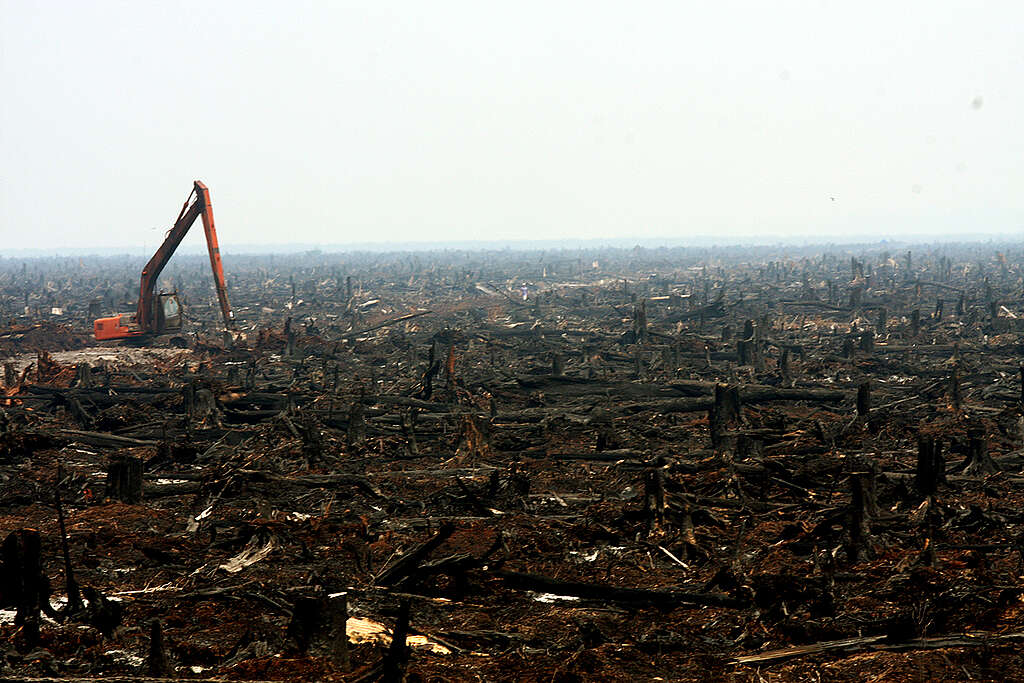
No Mining Pure NZ
Riding roughshod over public opinion, the new National-led Government also proposed to allow mining on ‘Schedule 4’ public conservation land. This and the gutting of the ETS prompted Greenpeace to work with its supporters and eNGO allies to mobilise in opposition to the Government’s plans, culminating in a historic march of 40,000+ people up Queen Street in Auckland on 1 May 2010.
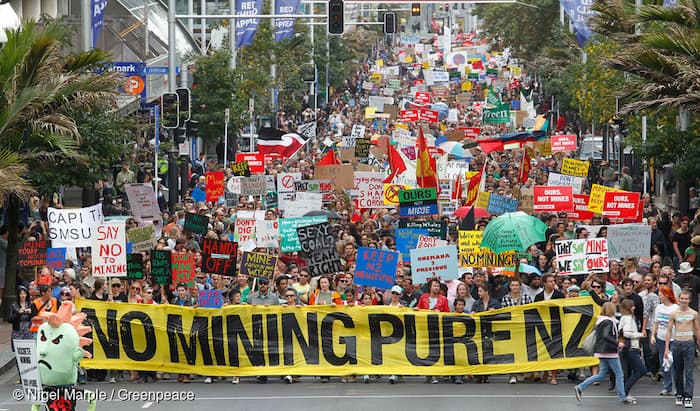
In the face of such a powerful demonstration of public opposition to its plans, the Government was soon forced to back down.
Defending the deep from bottom trawling
Following the successful campaign to improve protections for albatross from commercial fishing in the Commission for the Conservation of Antarctic Marine Living Resources (CCAMLR) zone in the Southern Ocean in 1991, Greenpeace increasingly turned its attention to the unsustainable commercial fisheries in Aotearoa in the 1990s, in particular bottom trawl fisheries for Orange Roughy and longline fisheries for Southern Bluefin Tuna. Orange Roughy fish stocks were nose-diving, and the Southern Bluefin Tuna was so overfished that it had been declared a critically endangered species.
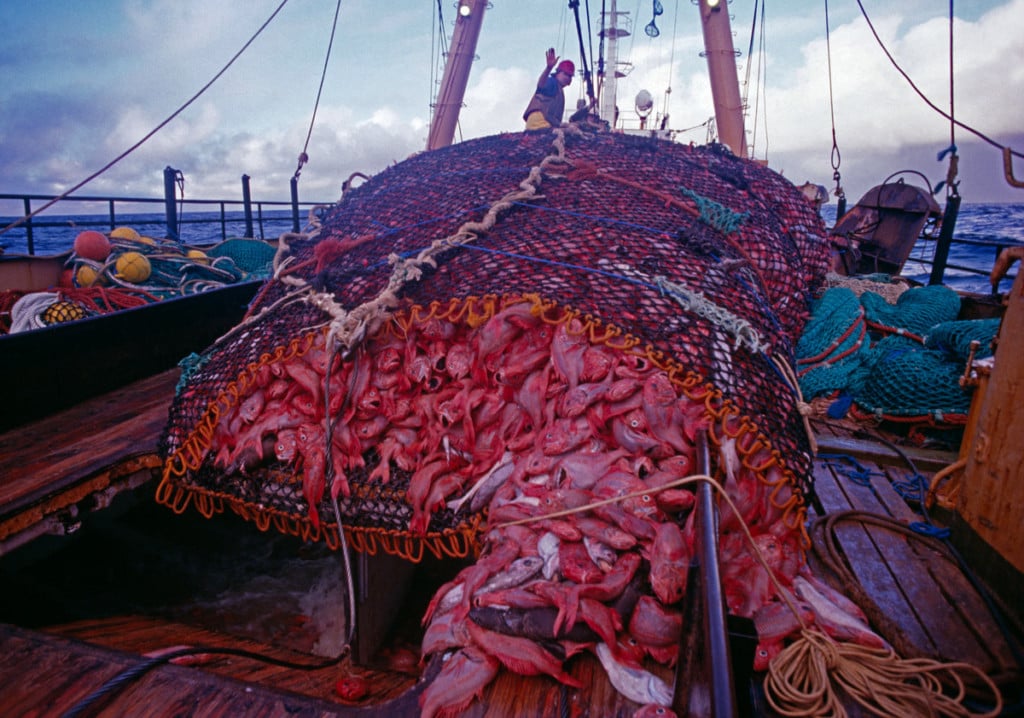
The common theme was the pursuit of short-term profit at the cost of collapsing fish stocks and long-term sustainability. These fisheries were also killing non-target species. The Orange Roughy bottom trawl fishery was destroying ancient corals on deep water seamounts with huge heavy trawl gear and the Southern Bluefin Tuna fishery was killing albatrosses and non-target sharks on baited longline hooks by catching and drowning them.
In 1997, Greenpeace sent MV Arctic Sunrise into New Zealand’s Subantarctic waters to document the damage being done by the Southern Bluefin Tuna fishery there. They located three Japanese longlining charter vessels fishing for Southern Bluefin Tuna and documented the deadly toll taken on non-target albatrosses and sharks. Scientists had estimated that 44,000 albatrosses were being killed in Japanese longlining operations in the wider Southern Ocean every year at the time.
In 2004, SV Rainbow Warrior II embarked on a new mission to document the destructive impact of bottom trawling in the Tasman Sea by New Zealand commercial fishing vessels. The crew and campaigners documented how endangered species of black coral were being broken off and brought to the surface by a bottom-trawl net, and then discarded by the trawler.
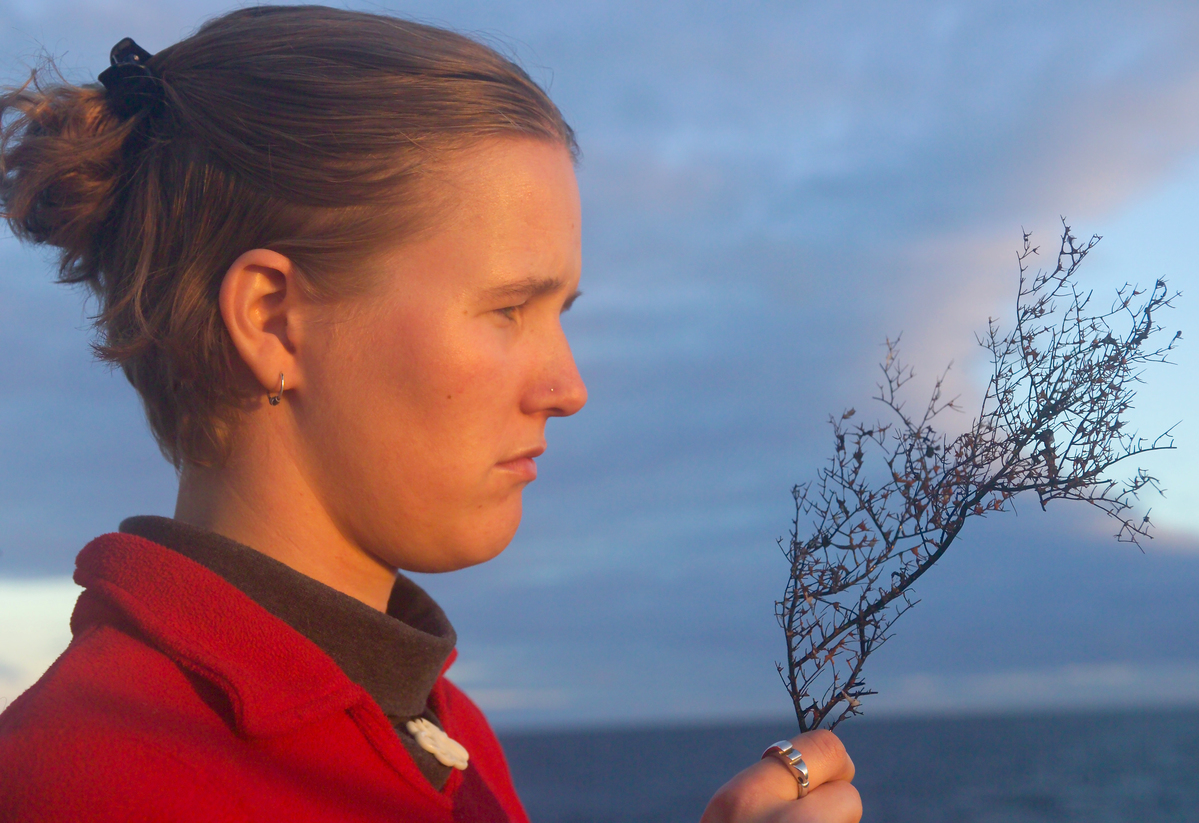
Greenpeace also took protest action against a destructive bottom trawling vessel there on the first day of talks at the United Nations General Assembly held in New York in 2004 on how to better manage the planet’s oceans.
SV Rainbow Warrior II‘s crew used inflatable boats to disrupt the NZ bottom trawler, Ocean Reward, to stop it from destroying deep-sea life while fishing in international waters in the Tasman Sea. They delayed the fishing vessel from deploying its trawl net by attaching an inflatable life-raft to it, running the gauntlet of being shot at with compressed air guns and sprayed with high-pressure fire hoses by the Ocean Reward’s crew.
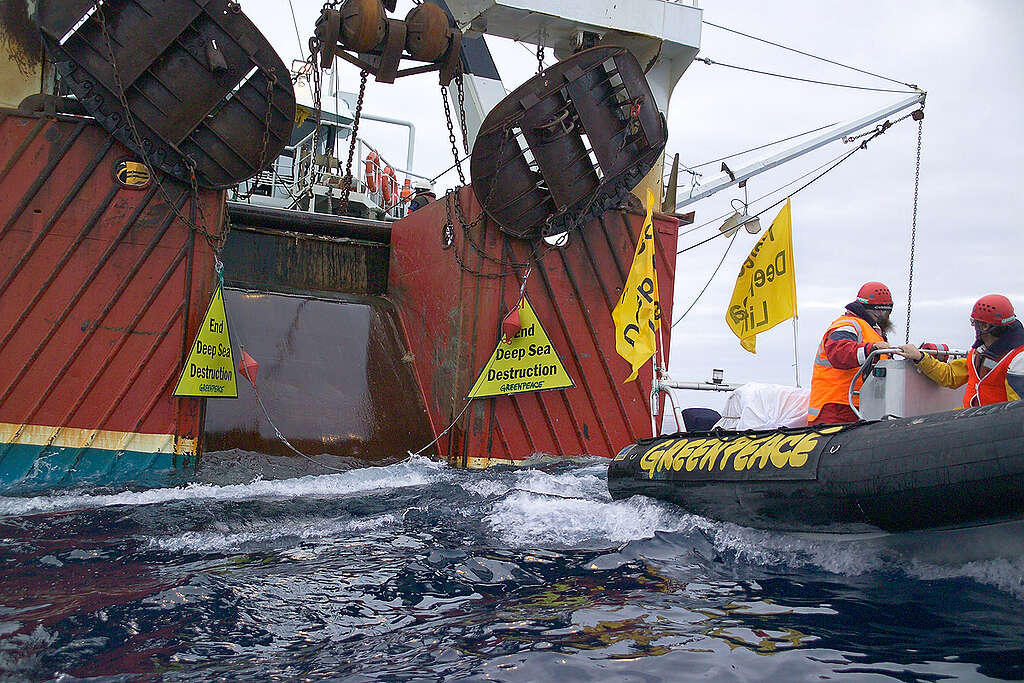
By publishing its photographic evidence of the destruction caused by bottom trawling, Greenpeace was able to disprove the claim made by the fishing company’s director, Andrew Talley, that Greenpeace’s assertions about the destructive impacts of bottom trawling were, “unsubstantiated claptrap”.
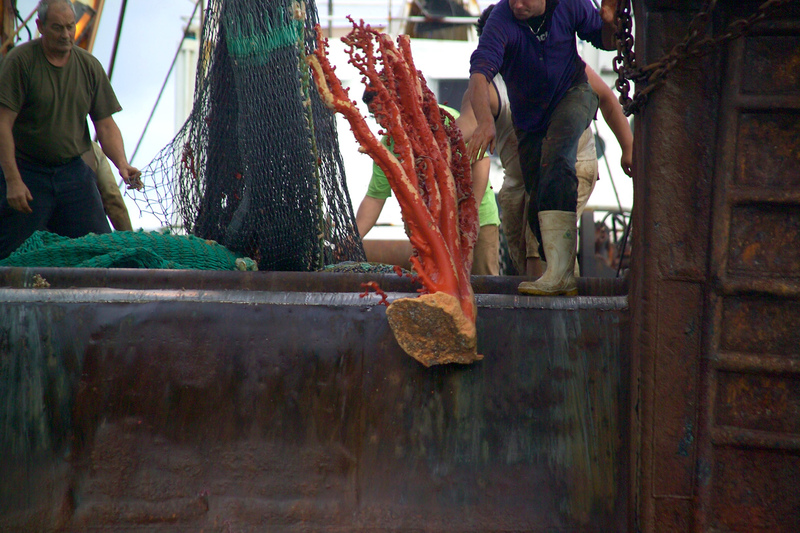
After the sustained campaign against bottom trawling by Greenpeace and allies in The Deep Sea Conservation Coalition, including Forest and Bird, ECO and WWF, the Labour-led Coalition Government announced the closure of 32% of the NZ EEZ to bottom trawling in 2007. However, a Greenpeace analysis showed that the closures did little to stop the destruction of vulnerable deep-sea lives threatened by bottom trawling, and it was branded as ‘Clayton’s closure. ‘
Greenpeace released a composite map showing where the fishing industry had been bottom trawling, overlaid with the fishing industry’s map of its proposed closures. The area to be closed was nowhere near the science-based protection that was needed, and the campaign to stop bottom trawling continues to this day.
After this, Greenpeace’s attention increasingly turned to the establishment of a huge marine protected area in the Southern Ocean to protect marine wildlife and fish stocks from destructive fishing. That led Greenpeace to launch a new global campaign for the establishment of a 1.5 million square kilometre Ross Sea Ocean Sanctuary off Antarctica in 2012.
At the time, the National-led Coalition Government of New Zealand chose not to support the proposal, but it was subsequently approved with the support of 24 countries at the annual meeting of the Commission for the Conservation of Antarctic Marine Living Resources (CCAMLR) in 2016.
GE-Free New Zealand
Another high-profile campaign started in the 1990s that continued into the 2000s was one opposing the release of genetically engineered (GE) organisms into the environment and food chain.
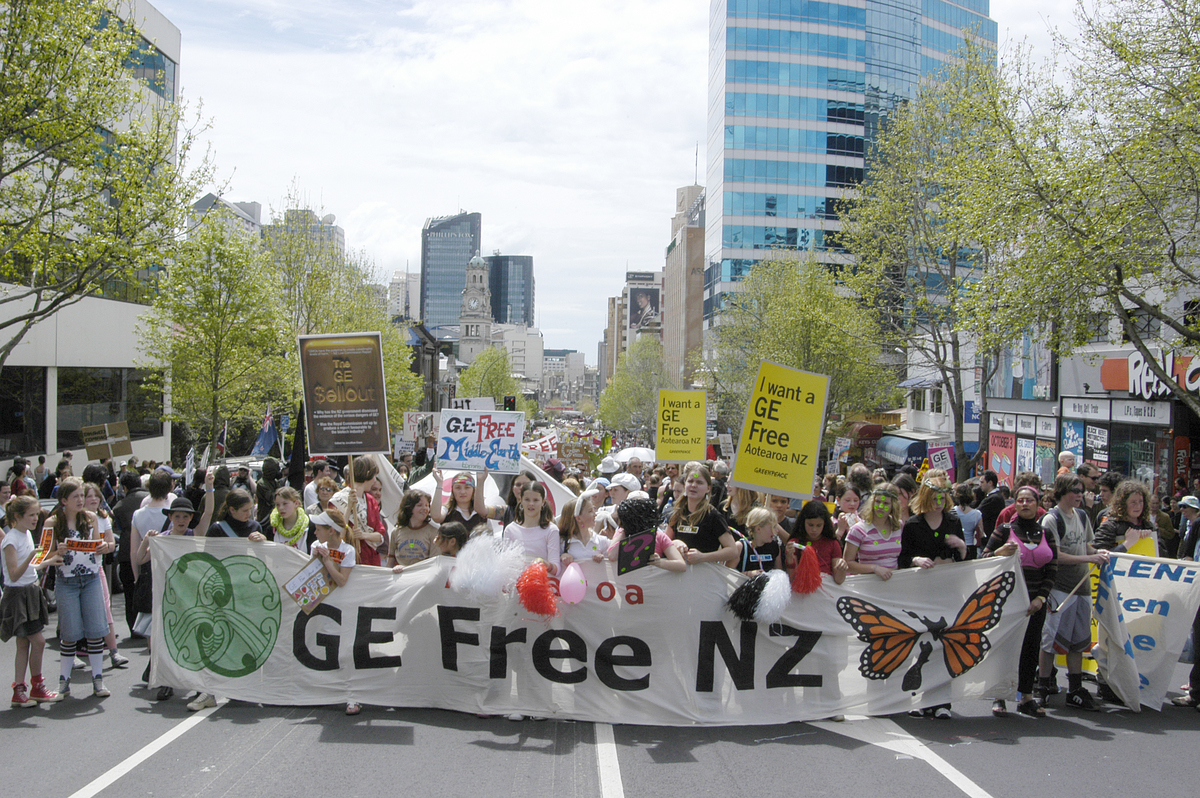
Greenpeace had been warning the public and decision-makers since 1992 about the potential serious risks, and calling for GE technology to be confined to the laboratory based on a precautionary approach.
As public concern about the GE issue grew, Greenpeace urged the National-led Coalition Government that came into office in 1996 to put in place a moratorium on the release of GE organisms into the environment and the use of GE ingredients in foods. The government chose not to do so, but the idea kept growing in popularity.
Shortly after that, Greenpeace established a consumer network called ‘Genetic Detectives’ that involved people writing to supermarkets urging them not to sell GE foods and helping Greenpeace to compile a list of companies that were committed to being GE-Free. The information gathered was later published by Greenpeace in its GE-Free Supermarkets Action Kit in 1999, a forerunner of Greenpeace’s popular True Food Guide and GE-Free Food Guide published between 2000 and 2008.
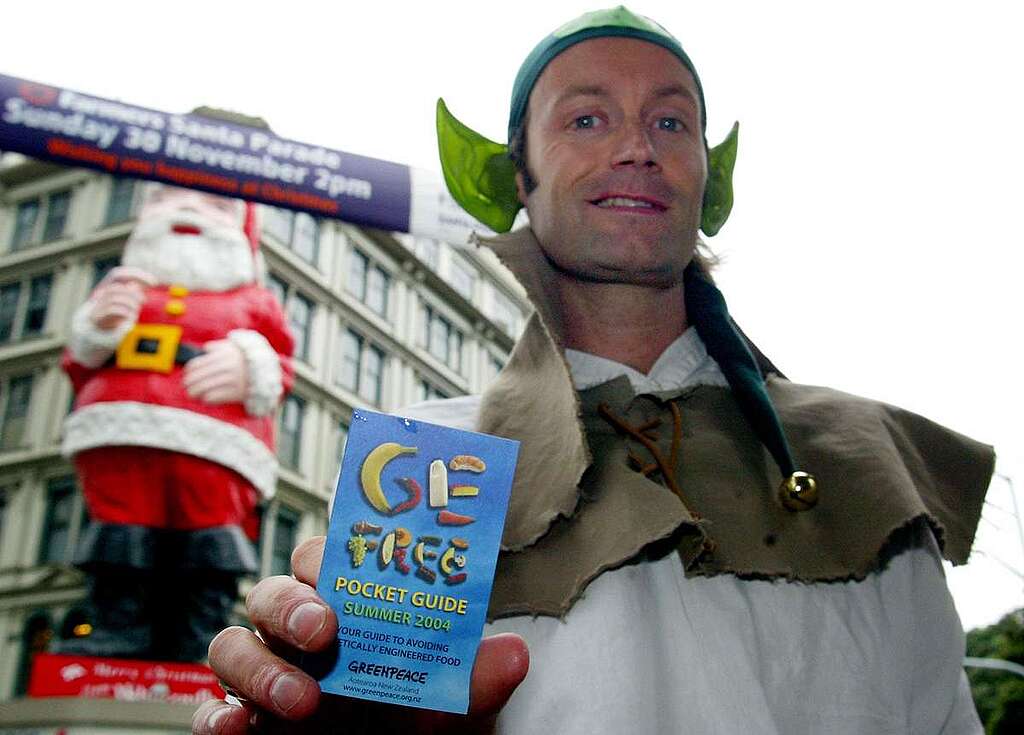
Over the next five years, this became one of Greenpeace’s main campaigns in Aotearoa. On 6 October 2000, an estimated 15,000 people joined GE-Free Day of Action events in 20 cities and towns around Aotearoa, organised by a coalition of GE-Free groups, including Greenpeace.
This was followed by Greenpeace protest actions targeting Tegel over its use of GE soya chicken feed and Nestle over its stance on using GE ingredients in foods, prior to the incoming Labour-led Coalition Government announcing a voluntary GE moratorium and a Royal Commission on Genetic Engineering in 2000.
SV Rainbow Warrior II embarked on a two-month nationwide tour campaigning for a GE-Free Future in Tamaki Makaurau in December 2000. A few months later in May 2001 Greenpeace launched an updated True Food Guide which reported that most NZ food companies were going GE-free.
Later that year, the Labour-led Coalition Government announced it would extend the voluntary GE moratorium, and shortly after that, Tegel announced it would go GE-Free.
Three big supermarkets go GE-Free
The next GE-Free campaign victory came when Progressive Enterprises Ltd announced it would adopt a GE-free policy for its own brand products in November 2001. The company covered about a quarter of the NZ retail grocery market and operated the Foodtown, Countdown, and 3Guys supermarket banner groups, and was the franchise co-ordinator for the FreshChoice and SuperValue banner groups.
In 2002, Greenpeace produced a new edition of its GE-Free Food Guide, with more than 80,000 copies distributed, and public meetings were organised around the country.
An estimated 15,000 people joined another GE-Free Rally in Tamaki Makaurau on 16 November 2002. Starting in Aotea Square, the marchers filled Queen Street for over an hour before marching up Queen Street for a GE-Free New Zealand and sending a clear message to the Labour-led Coalition Government and the GE industry to go GE-Free.
Greenpeace, GE-Free NZ, Mothers Against Genetic Engineering (MAdGE), Green Gloves, and other members of the Auckland GE-Free Coalition took part in the rally. The colourful parade of banners, placards and costumes ended in Albert Park where people listened to speeches and live music featuring Trinity Roots, the Topp Twins, and Golden Horse.
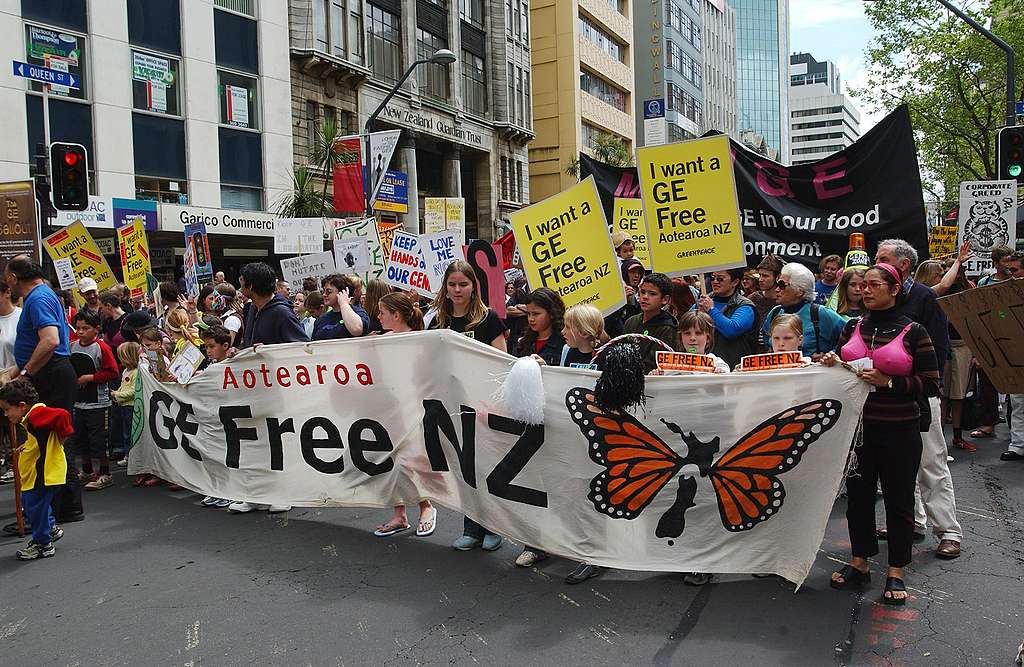
The following year on 11 October 2003 an estimated 35,000 people marched up Queen Street calling for an extension of the GE moratorium. The massive turn-out made it one of New Zealand’s biggest marches, which was again supported by Greenpeace, Mothers Against Genetic Engineering (MAdGE), and the Auckland GE-Free Coalition.
Opinion polls during the period 2000–2004 repeatedly recorded that a large majority of the public was opposed to GE releases into the environment, and GE ingredients in foods. Despite this, the Labour-led Coalition Government ended the voluntary GE moratorium on 27 October 2003.
Greenpeace and the other GE-Free groups responded with a strong message that ‘the battle is not over’ and launched ‘The People’s Moratorium’. Greenpeace urged the public to demand that food companies continue to remove GE ingredients from their products and challenge all new applications to grow GE crops in New Zealand.
The continued pressure paid off. In November 2003, Foodstuffs (Pams and Budget brands) adopted a GE-free policy, and Goodman Fielder joined Australasian food companies Heinz Watties and Unilever in going GE-Free.
Ronald McDonald protests against GE-fed chickens
Buoyed by the success of the GE Free campaign in persuading supermarkets and big food companies to adopt GE-free policies, Greenpeace started targeting GE soya fed chickens produced by Tegel and Inghams for use in fast food giants KFC and McDonalds.
In January 2001, Greenpeace activists delivered two tonnes of GE-free soya to a Tegel factory in Christchurch, urging the company to commit to using only GE-free soya chicken fee.
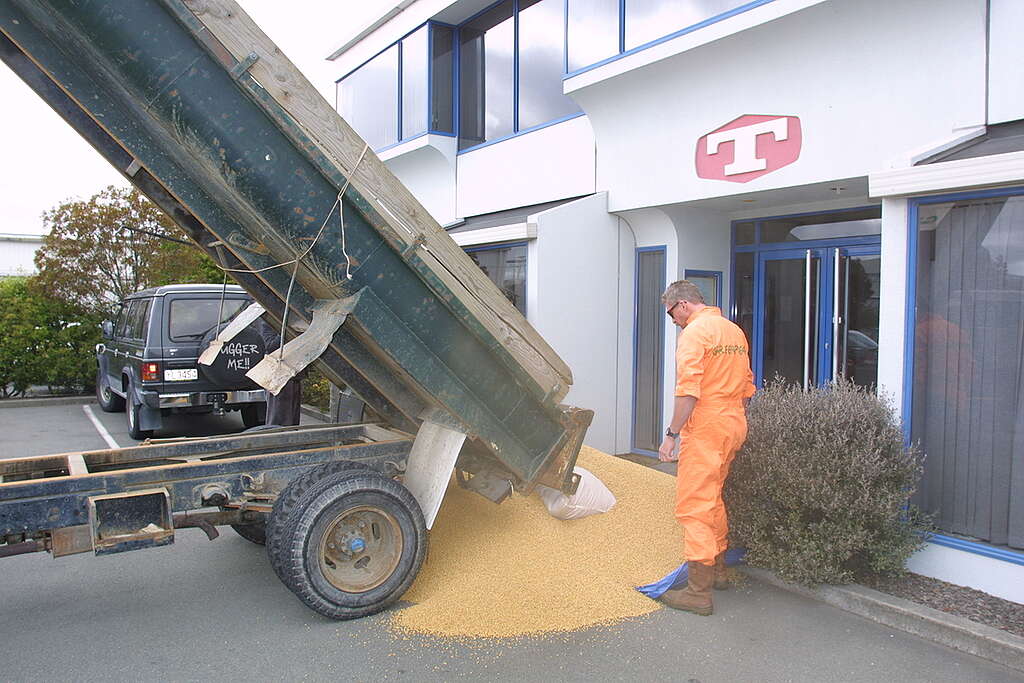
In September 2003, chicken-suited Greenpeace activists closed down the Inghams/Harvey Farms soya chicken feed factory in Hamilton by blocking the entrance and hanging a giant banner that read, “Inghams – GE Feed Not Wanted”. Their demand was for the company to switch to using only GE-free soya chicken feed.
SV Rainbow Warrior II blockaded an Inghams shipment of GE soya chicken feed in early 2004 shortly before embarking on a GE-Free tour of New Zealand.
In December 2004, Greenpeace staged a protest at the Queen Street McDonalds restaurant with a dozen people dressed as chickens and a Ronald McDonald lookalike who handed in his resignation over McDonalds use of GE-fed chickens.
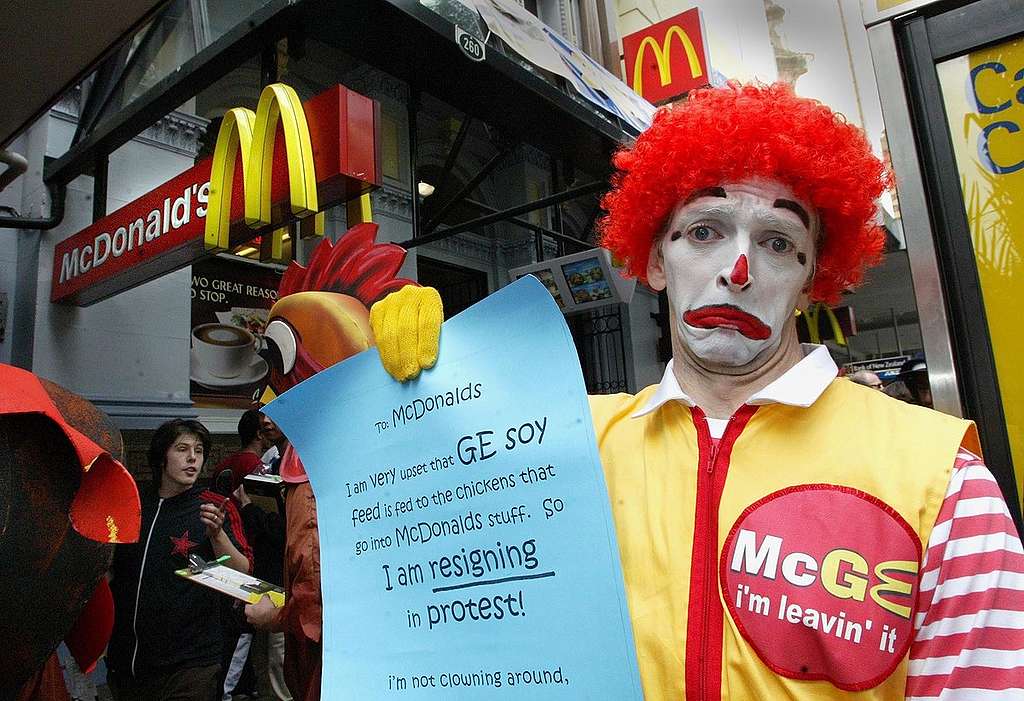
Then in May 2004, in one of its most memorable actions, a Greenpeace activist (Gareth Hughes) in full ‘Ronald McDonald’ regalia was arrested for chaining himself to the gates of McDonalds’ distribution centre in Wiri, Auckland, in protest at the company’s use of GE soya fed chickens.
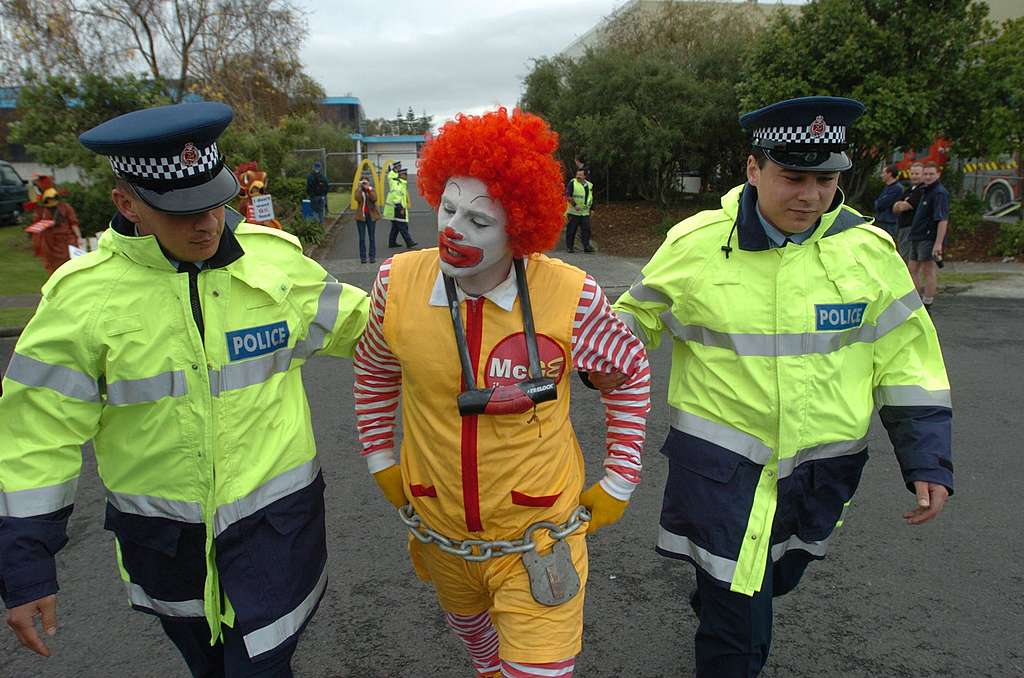
‘Ronald’ was led to a police car wearing a big fake chain and was driven away to be charged with disorderly conduct at the local police station. A photograph of a glum-faced ‘Ronald’ staring out of the window of the police car appeared around the world, and it became one of Greenpeace’s most iconic protest actions.
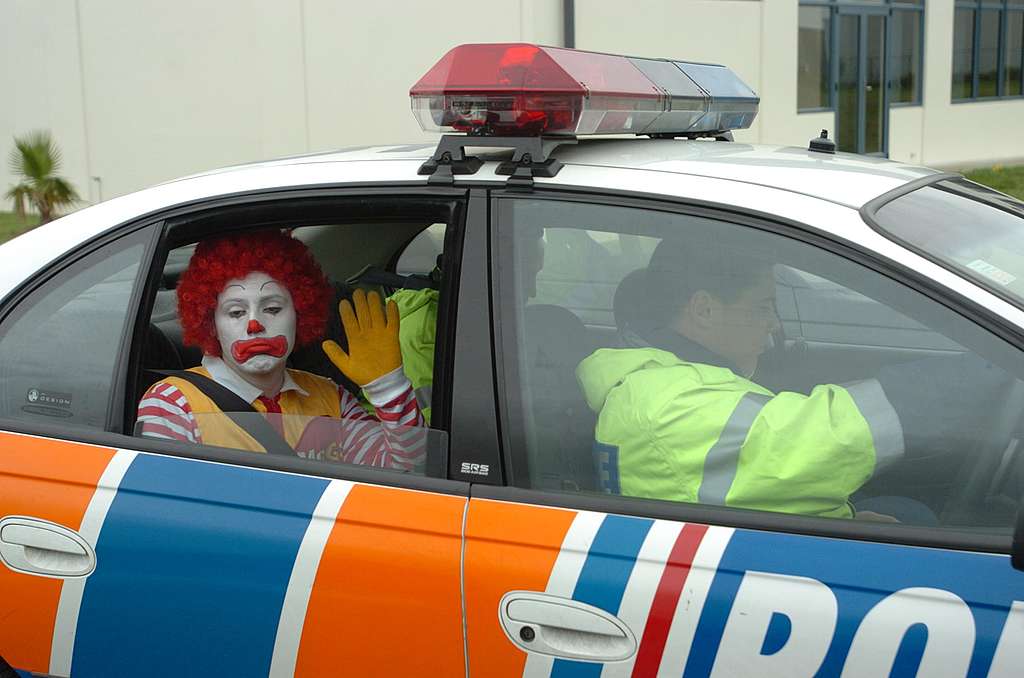
While the campaign was humorous and good-natured, the issue it addressed was a serious one because where GE crops were grown overseas, they had led to an increase in herbicide use, lower yields, weed problems, and the contamination of conventional and organic crops.
McDonald’s goes GE-Free
Two weeks later McDonalds New Zealand announced that it was seeking a non-GE feed supply for its chicken products and would shift over as soon as it could to GE-free chicken feed. Greenpeace’s ‘Ronald McDonald’ GE-Free campaign was a success.
Ultimately, however, all of this was ignored by the Labour-led Coalition Government in 2003 when it refused to convert the GE moratorium into a ban on GE releases into the environment and a ban on GE ingredients in foods. Greenpeace and its GE-Free allies had won the campaign in the court of public opinion and achieved important victories, but the government of the day chose to ignore that.
The inside story of why that government chose to do that is yet to be told publicly. It appears they tried to ‘park the issue’ to buy time with a long and drawn-out Royal Commission process during the GE moratorium, perhaps gambling that public opposition to GE technology and GE foods would subside. But if that was their strategy, it emphatically did not work.
Save the rivers and healthy water for all!
In 2016, Greenpeace put its attention on freshwater pollution from dairying, nitrous oxide emissions resulting from synthetic fertiliser use, and big irrigation schemes that encouraged the expansion of dairying at the expense of wild rivers and aquifers.
That evolved into an ambitious larger agenda to transform New Zealand’s polluting industrial model of dairy farming into a sustainable, regenerative model of farming.
To begin highlighting the poor state of rivers in ‘Pure NZ’, Greenpeace launched a parody ad spoofing the dairy industry via a spoof Tourism NZ ad online.
With a view that irrigation was one of the key inputs supporting the intensive dairy industry and was also directly responsible for degrading aquifers and rivers, Greenpeace began a campaign to stop big new irrigation schemes from being built, and specifically to end Government funding of these schemes.
Greenpeace targeted the proposed big Ruataniwha dam scheme in Hawke’s Bay, the biggest at the time, which was set to be built on publicly-owned conservation land.
So began a long campaign along with local groups Wise Water and Forest & Bird to prevent the giant Ruataniwha dam from being built. The dam would have flooded a large area of critical conservation land, severely degraded a river, and driven the expansion of intensive dairy farming in the area.
In 2016, Greenpeace successfully campaigned with locals and other eNGOs to demand the Hawke’s Bay Regional Council withhold $80 million of ratepayer funds that it had set aside to subsidise the dam.
In May 2016, Greenpeace activists blockaded the entrance to ACC’s multi-storey building in Wellington with six tonnes of dairy sewage in eight secure heavy-duty tanks in protest at the Government department’s funding link to the controversial Ruataniwha irrigation scheme.
Then, in June 2016, Greenpeace launched a legal challenge against the RMA resource consents granted by the Hawke’s Bay Regional Council to extend the area of land that could be irrigated by the proposed Ruataniwha dam scheme, which was now tipped to cost close to $1 billion to build.
In September 2016, Greenpeace uplifted the site office of the proposed Ruataniwha dam and delivered it to the Hawke’s Bay Regional Council offices in Napier, 100km away.
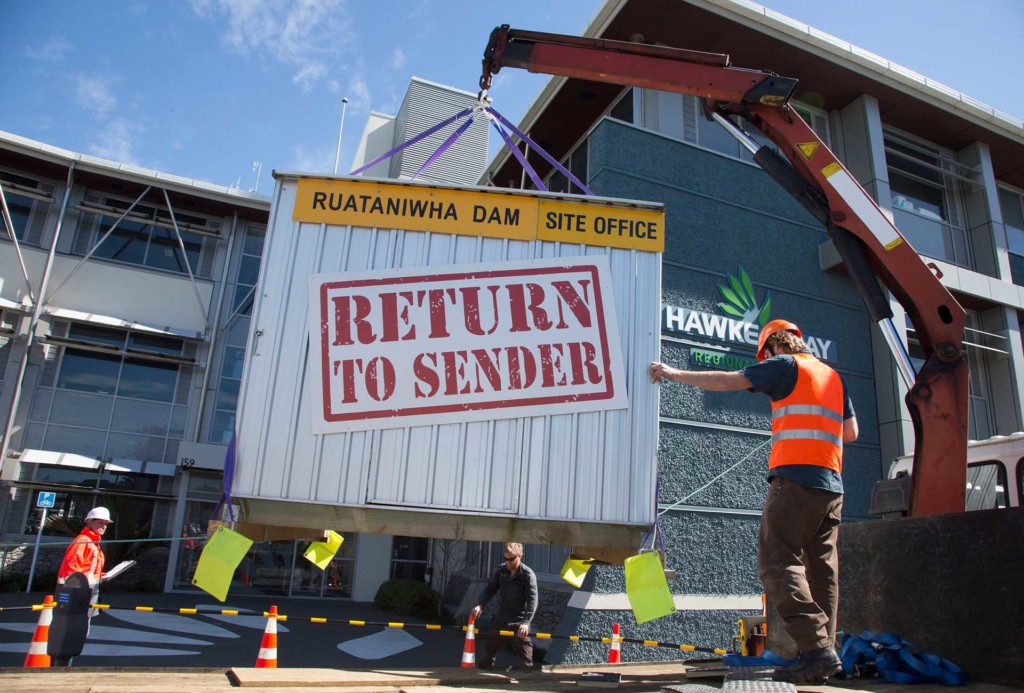
It was a classic ‘return-to-sender’ action prior to voting papers landing in people’s letterboxes for upcoming local elections. Over 70,000 people sent emails to the region’s councillors urging them to halt the scheme.
In October 2016 Greenpeace urged the new Hawke’s Bay Regional Council to make ditching the Ruataniwha dam their top priority. Then in July 2017, after a sustained public campaign, the regional council dropped the Ruataniwha irrigation dam scheme. That plus a Supreme Court ruling that the dam couldn’t be built on conservation land stopped it from being built.
Greenpeace followed up by issuing a warning to other ‘think-big’ irrigation schemes and demanded that the government’s irrigation subsidies be invested in a transition fund for more sustainable forms of regenerative farming.
In June 2017, Greenpeace publish the ‘Sick of Too Many Cows’ report examining the link between human health, intensive livestock farming and water pollution. The report is launched on the lawn of Parliament – with activists accompanied by a herd of dairy cows.
And then in August 2017, Greenpeace activists brought construction to a halt at Central Plains Water, by locking themselves to machinery and inside huge irrigation pipes. After a day of peaceful protest and the police attending site, no arrests were made.
After Central Plains Water’s lawyers threatened injunction, Greenpeace responded quickly with a ‘lighting occupation‘ – occupying one of their dam sites at 5AM. After eight hours at the dam, nine activists were arrested by police and removed. Among those arrested – a dairy farmer’s daughter and several locals.

That was followed by the occupation of the offices of Environment Canterbury early with a demand that democracy be returned to the organisation with the ‘People’s Manifesto.’ In it, protesters demanded the return of their democratic right to vote for their regional councillors, fewer cows and no more Big Irrigation.

Greenpeace continued to target big irrigation projects with a series of actions in 2017 and 2018 aimed at halting the intensification of dairying and promoting regenerative agriculture as a better alternative.
In July 2018, Greenpeace campaigned hard against a planned mega dairy farm in the Mackenzie Basin. A team of 45 activists locked onto diggers to disrupt the construction of a big irrigation pipeline and unfurled a giant banner that read, ‘Stop Dairy Expansion’. The site was in a fragile tussock landscape that is home to the endangered endemic Kakī/Black Stilt, the world’s rarest wading bird species with only about 100 individual birds left.
Shortly after the action, even dairy giant Fonterra conceded that it too would, “prefer not to see more dairy expansion in the Mackenzie Basin”.
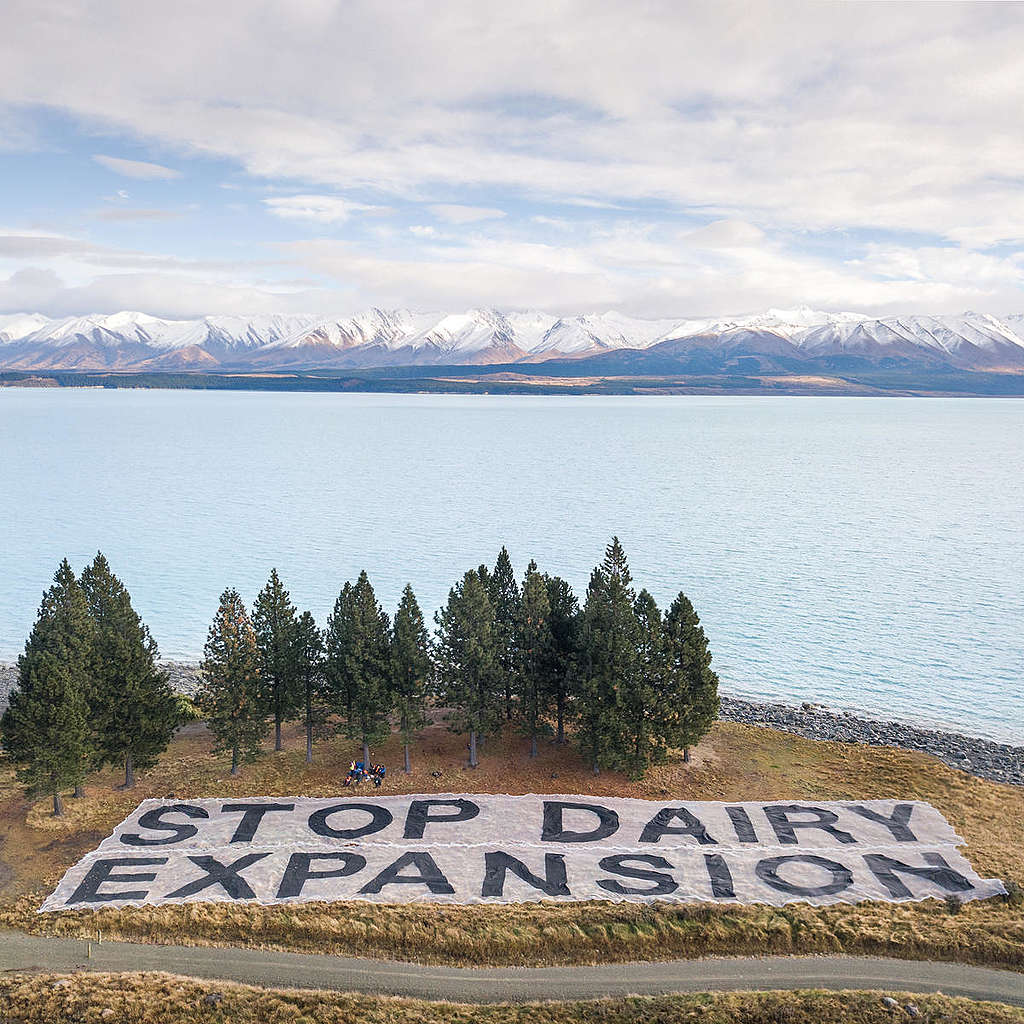
After a prolonged campaign against the National-led Coalition Government’s and various regional councils’ plans promoting and subsidising big irrigation projects during the 2010s, Greenpeace s쳮ded in persuading the incoming new Labour-led Coalition Government to stop funding big irrigation schemes.
It was a huge win for the protection of wild rivers, including the Ruamāhanga, the Waitaki, and the Hurunui.
Next, Greenpeace produced a short documentary film showcasing regenerative farming in New Zealand – ‘The Regenerators’ – which was featured at a UN conference in New York in November 2018. Shortly after, Greenpeace called on the New Zealand Government to ban synthetic fertilisers because of the nitrous oxide emissions that result from its use and destroy the climate.
In August 2019 Greenpeace called for the halving of the NZ dairy herd after a Government report identified dairying as New Zealand’s dirtiest industry, and a United Nations International Panel on Climate Change (IPCC) expert report said there was an urgent need to revamp global food systems away from industrial meat and dairy production.
Shortly after that, in September 2019, the Labour-led Coalition Government proposed a cap on synthetic fertiliser use to “help rivers”. It was a major step in reducing carbon emissions and water pollution from the agriculture sector that was welcomed by Greenpeace.
Following the establishment of the Government’s new $1 billion Provincial Growth Fund in 2018, some far smaller support was given to irrigation while the NZ First Party’s Shane Jones was the relevant minister.
Greenpeace and other NGOs, including Forest & Bird and Fish & Game, continued to campaign against government handouts to big irrigation schemes. In May 2020, Greenpeace called for the Government to establish a new $1 billion regenerative agriculture fund to help create a just transition to a truly ecological form of regenerative agriculture in New Zealand, as well as the fast-tracking of public funding for farm waterway fencing and plantings with Government finance to protect water quality and ecological values.
Greenpeace stepped up its campaign for a ban on synthetic Nitrogen fertiliser by blockading the Ballance fertiliser factory in Taranaki in July 2020. Then in October 2019 Greenpeace criticised the Government’s decision to exclude farming from the Emissions Trading Scheme describing it as a “major sell-out”.
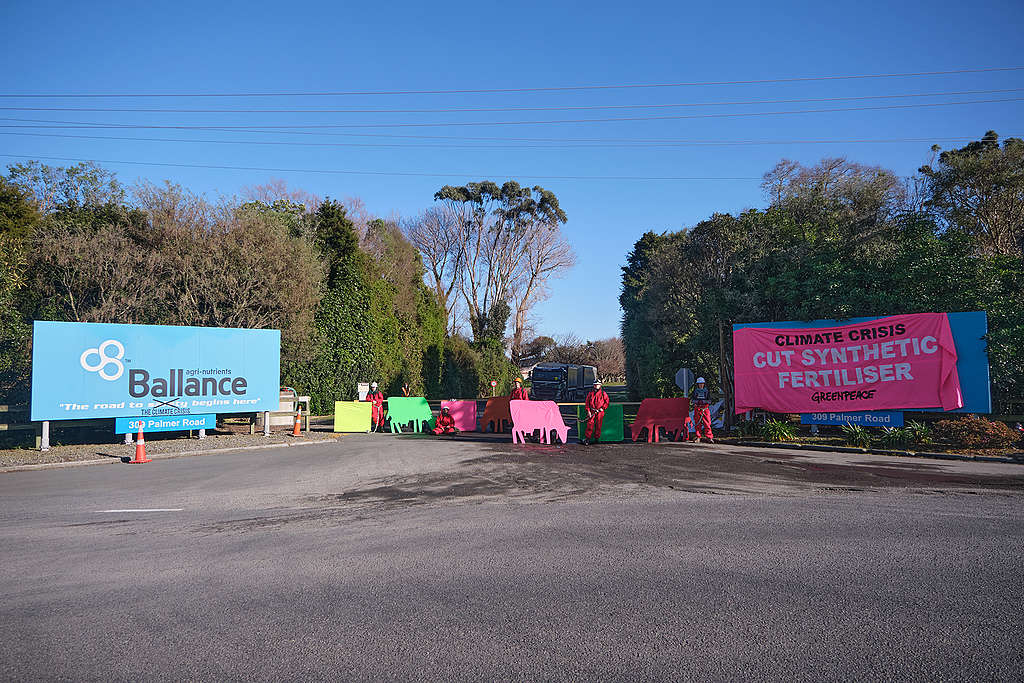
In March 2020, Greenpeace proposed that the Government fund a Green New Deal recovery package in response to the Covid-19 pandemic. Greenpeace said the pandemic presented an opportunity to build a greener, healthier, and more resilient economy that puts people and the planet first.
The ongoing campaign’s goals are now to ensure that no new public funding is handed out to big irrigation schemes, synthetic Nitrogen fertiliser is banned, and for the Government to fund a transition to regenerative farming.
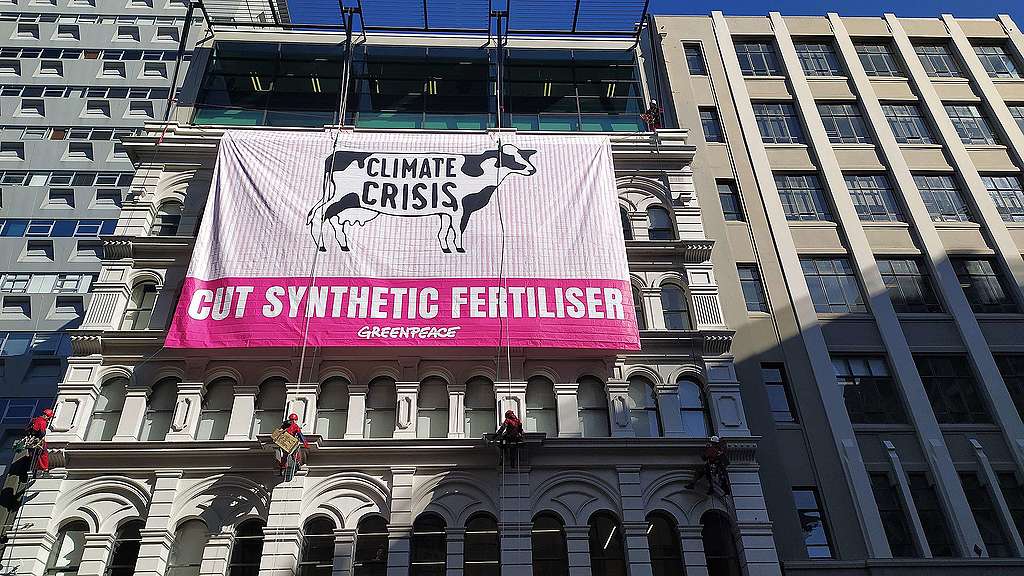
If the Government does this, Greenpeace says the country will be better able to respond to the climate, biodiversity, and inequality crises that it still faces.
The campaign focus is now on ensuring that everyone has access to clean, fresh water, can swim in our rivers, gather healthy freshwater kai and drink pure water.
In 2020, the Ministry of Health began investigating the link between nitrate pollution from farming in drinking water and New Zealand’s extremely high rate of bowel cancers.
Greenpeace continually highlights the simple truth that everyone should be able to trust that the water from their tap is safe to drink. But synthetic nitrogen fertiliser and intensive dairying are causing alarmingly high levels of nitrate contamination in our drinking water – endangering public health.
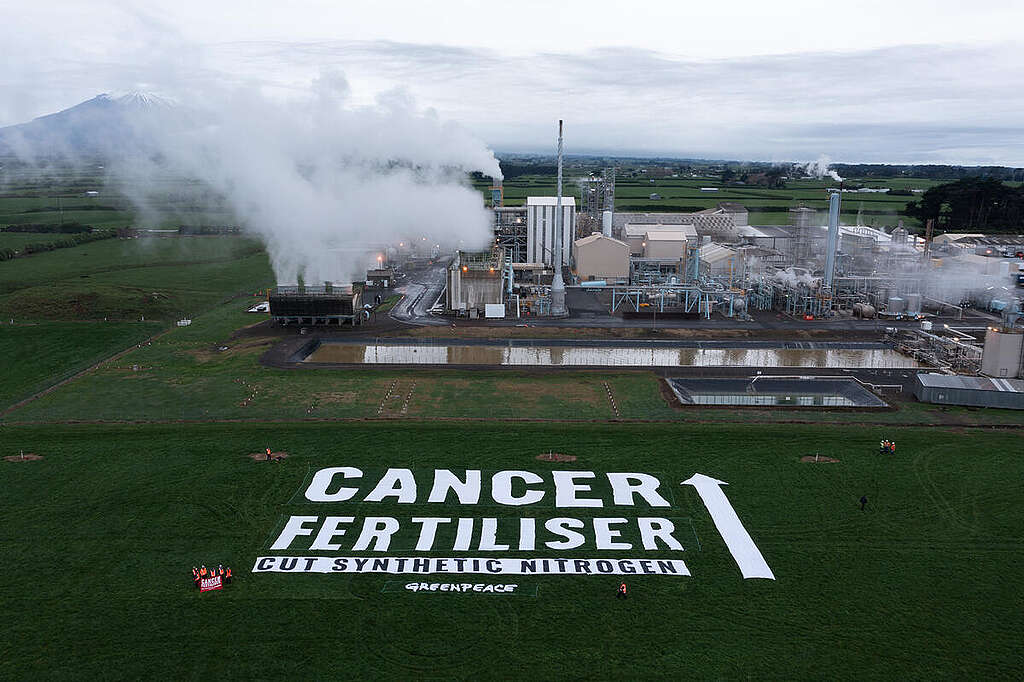
© Greenpeace / Ben Sarten
Scientists have warned that nitrate in drinking water could be causing 100 cases of bowel cancer and 40 deaths per year in New Zealand. Rural communities on bore water are the most at risk.
In response, Greenpeace has organised water testing events across the country, with a particular focus on regions with high levels of dairy farming. In 2021, Greenpeace also began testing water for nitrate contamination and distributing free water testing kits.
Through this work, Greenpeace compiled the largest nitrate contamination dataset in the country and produced the ‘Know your Nitrate’ map, which allows people to zoom into their area to get a look at what the nitrate contamination risk might be.
Making oil history
The National-led Coalition Government that came into office in 2008 also started to issue a slew of new permits for oil and gas exploration at sea. In 2011, Greenpeace and a ‘Stop Deep Sea Oil’ Flotilla of independent sailors responded to a call by Te Whānau-ā-Apanui to join them in their resistance against Brazilian oil giant Petrobras, which was due to begin seismic blasting in the deep waters of the Raukumara Basin in search of oil.
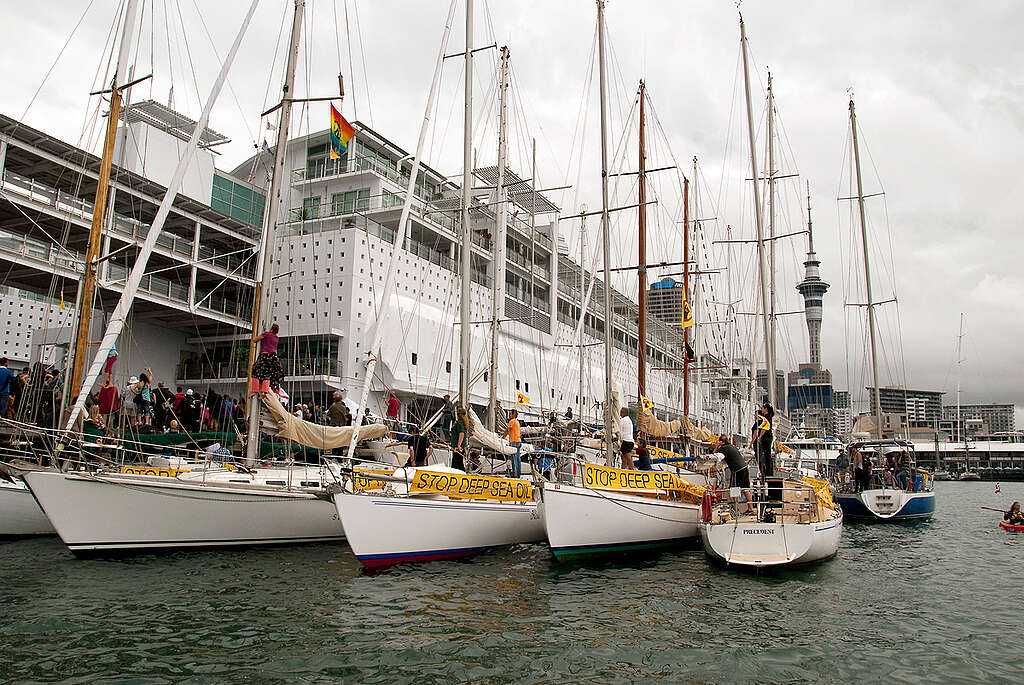
Over 42 days, the Flotilla boats (including SV Vega) and the Te Whānau-ā-Apanui fishing vessel San Pietro disrupted the giant Petrobras seismic blasting ship’s search for oil, despite the deployment of the NZ Navy and NZ Police, and with the latter boarding some of the boats to make arrests. Activist Kylie Matthews (Ngāpuhi) dived into the sea in high vis gear and a hard hat right in the path of the seismic blasting ship with a floating ‘Stop Deep Sea Oil’ banner, forcing it to change course.
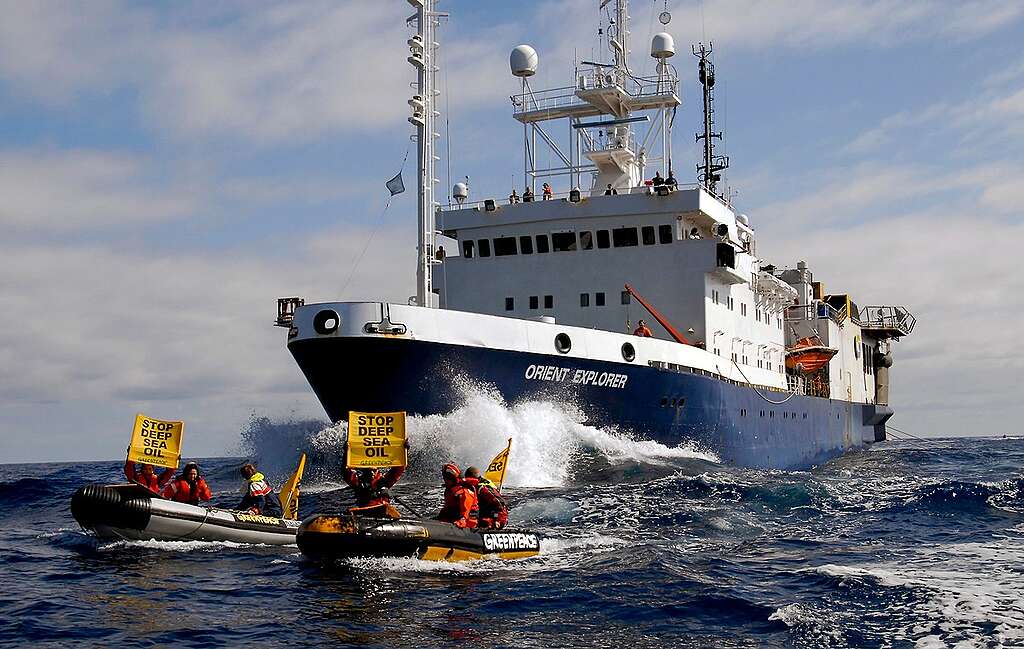
A few days later, Te Whānau-ā-Apanui leader Rikirangi Gage was on board San Pietro alongside Apanui fisherman Elvis Teddy when Gage told the oncoming seismic blasting ship over the radio, “we will not be moving, we will be doing some fishing”.
The protests were successful, and the following year, Petrobras handed back their oil exploration permit to the NZ Government and announced their exit from NZ. It was a significant victory for all New Zealanders opposed to risky deep-sea oil drilling.
The campaign continued around the country, wherever there was any new oil and gas exploration at sea, bringing together Greenpeace with Iwi, Oil-Free groups, eNGO allies and local community activists.
In 2013 Greenpeace and the ‘Stop Deep Sea Oil’ Flotilla went up against Texan oil driller Anadarko, which came to NZ to carry out seismic blasting off Kaikoura and to drill for oil in deep water directly off the Raglan coast. Greenpeace sent SV Vega as part of a new six boat ‘Oil-Free Seas Flotilla’ to confront the huge Anadarko drilling ship off the Raglan coast in November 2013.
The crew sailed SV Vega into the 500-metre exclusion zone to deliberately break the National-led Coalition Government’s ‘Anadarko Amendment’, which was designed to outlaw protest against oil exploration at sea, but they were not arrested by police. At the height of the Flotilla’s protest against Anadarko, thousands of people with banners mobilised to rally on West Coast beaches in solidarity. Anadarko pulled the plug on its NZ operations in March 2014 after its unsuccessful drilling campaign was met with sustained opposition.
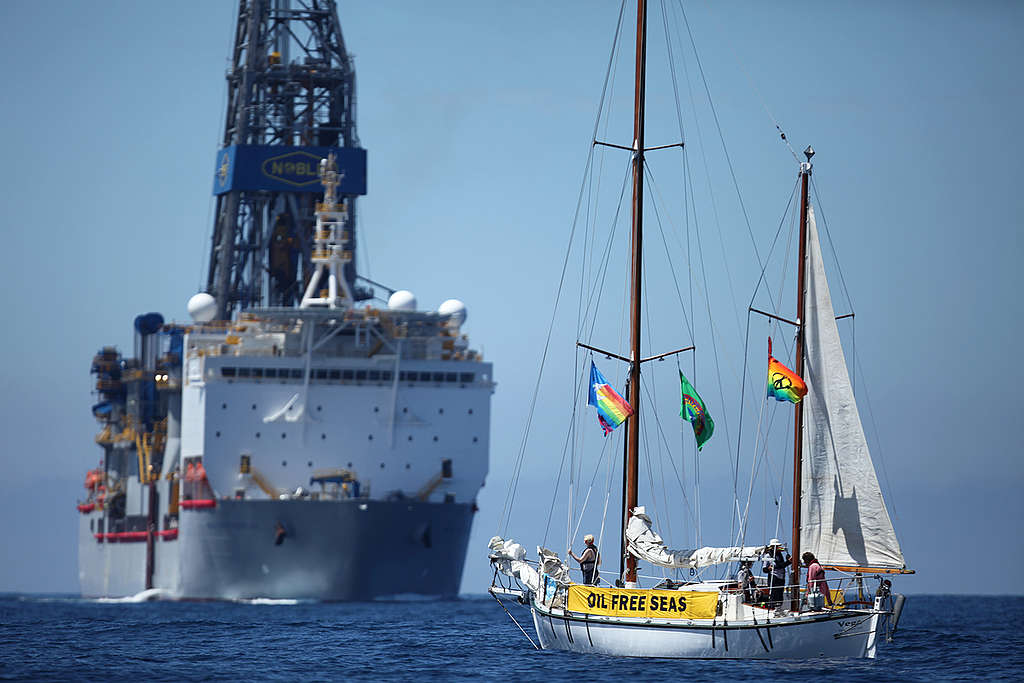
In 2015, Shell Oil delayed its plan to drill for oil and gas in the Great South Basin following more public opposition organised by Greenpeace and Oil-Free groups in the South Island.
The next year, Greenpeace welcomed the news that Shell had advised its investment bank to offload its $1 billion New Zealand portfolio, describing it as another big nail in the coffin of the NZ Government’s climate-hostile agenda.
In 2017, after confronting Statoil and Chevron seismic blasting 50 nautical miles off the Wairarapa coast in two small boats, the Greenpeace crew put out a call to New Zealanders to help them buy a bigger boat.
Within seven days, they’d crowdfunded nearly $100,000 and bought an old postal delivery vessel which they quickly refitted, named it Taitu, and headed out to confront the oil giant again.
Executive director Russel Norman was on board and was one of two on board who jumped into the water in front of the Amazon Warrior and forced it off course. When reaching land again the two were arrested and charged under the ‘Anadarko Amendment’ which the key Government had brought in to make it illegal to protest against offshore oil exploration. They defiantly plead not-guilty and a crucial legal defence began. The case ended with the pair being discharged without conviction in another big win for Greenpeace.
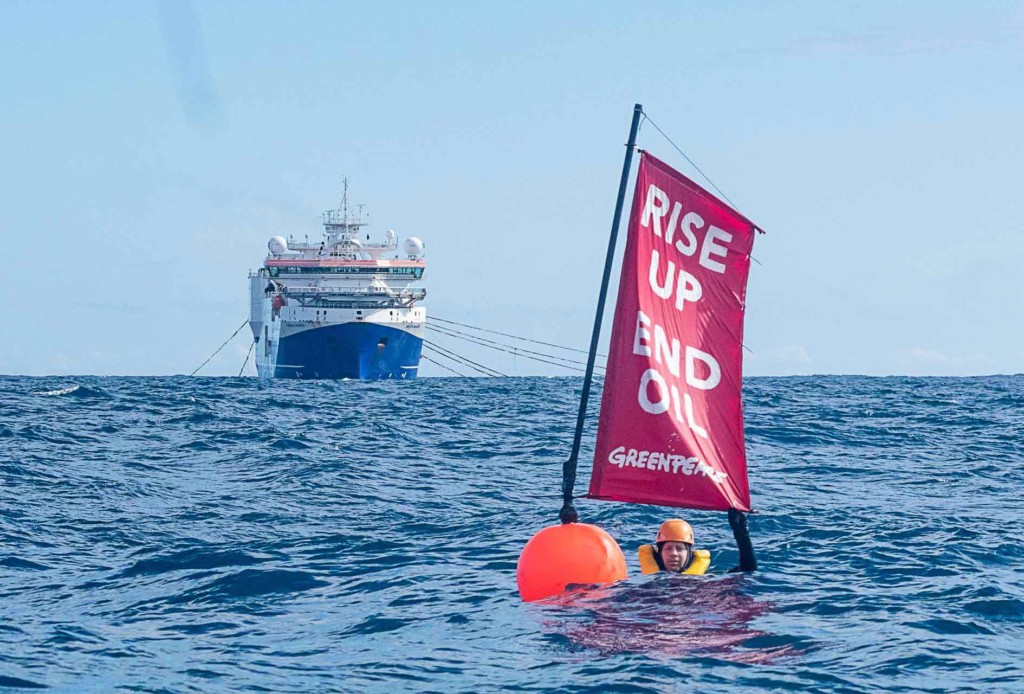
One after another, oil exploration companies pulled the plug on their operations in Aotearoa in the face of the sustained at-sea protests by Greenpeace and others. The time was ripe for a nationwide ban. That came in April 2018, when Greenpeace welcomed the new Labour-led Coalition Government’s decision to ban new offshore oil and gas exploration, calling it an “historic moment, and a huge win for our climate and people power”.
It followed a people-powered campaign lasting nearly a decade that brought together Iwi, Greenpeace, eNGOs and oil-free groups around the country. The same government passed its much-anticipated Zero Carbon Act in November 2019, which set out targets for zero net carbon emissions by 2050 and a reduction of between 24% and 47% of methane emissions by 2050.
Greenpeace described it as a hard-fought, people-powered win to be celebrated but warned that it should not become a convenient excuse for politicians to do nothing further about climate change. Its passage meant that a framework had been put in place, but the hard work was still to be done to improve the targets and ensure implementation.
“With a miserly ambition of 10% cuts in methane by 2030 – the gas from our dirtiest industry, dairy – the Zero Carbon Bill is watered-down medicine that lacks the potency to cure the actual ailment we have,” warned Greenpeace Executive Director Russel Norman. “We’re living through a climate emergency, and New Zealanders are more prepared than ever to fight for action against it. We’ve seen a new wave of climate protests taking the world by storm. Millions of students regularly go on strike from school to pressure their governments to act. I think if the New Zealand Government doesn’t get on with stopping polluting activities and backing clean energy, then we’ll see more public protest and civil resistance.”
Greenpeace also called for a ban on synthetic nitrogen fertiliser use because of its huge role in the dairy farming sector’s methane production. The following year Greenpeace celebrated the Labour-led Coalition Government’s move to put a cap on synthetic nitrogen fertiliser.
Cameras on boats
During the 1990s and 2000s, Greenpeace had shown it could gather photographic evidence of seabird, marine mammal and deep-water coral bycatch out at sea, but its boats couldn’t follow and record the activities of every fishing vessel every minute of every day.
Surveillance cameras are an effective way to document the scale of the problem and to help stop it happening, including illegal fish dumping and under-reporting of fish catches.
In the 2000s Greenpeace and other eNGOs started to campaign for surveillance cameras to be mandatory on commercial fishing boats to both ensure transparency and help reduce bycatch of non-target marine mammals, seabirds, marine turtles, sharks and corals.
A 2015 study carried out in Australia confirmed this was the case by showing that putting surveillance cameras on longline fishing boats increased the reporting of bycatch by eight times, and similar camera trials in New Zealand have also documented boats illegally dumping unwanted fish.
The National-led Coalition Government eventually agreed that inshore commercial fishing vessels would be required to have surveillance cameras on board in 2017, but after the change to a new Labour-led Coalition Government later in 2017 the process dragged on and it was six years before the first surveillance cameras were installed on the first few commercial fishing vessels in August 2023. More have been installed since then and up to 300 inshore boats are to have them fitted by early 2025, but Greenpeace wants to see the entire commercial fishing fleet that operates in the NZ EEZ (about 1,500 vessels) have them installed.
Pushing back the ‘War on Nature’
When a new National-led Coalition Government came into office in November 2023 it moved quickly to undo the gains of the 2017-2020 period that aimed to combat climate change – launching what Greenpeace and others have described as a ‘War on Nature’. Central to the new government’s line of attack is a proposed new law that exempts a list of hand-picked industrial developments like seabed mining, dairy dams and waste incineration from the main environmental laws.
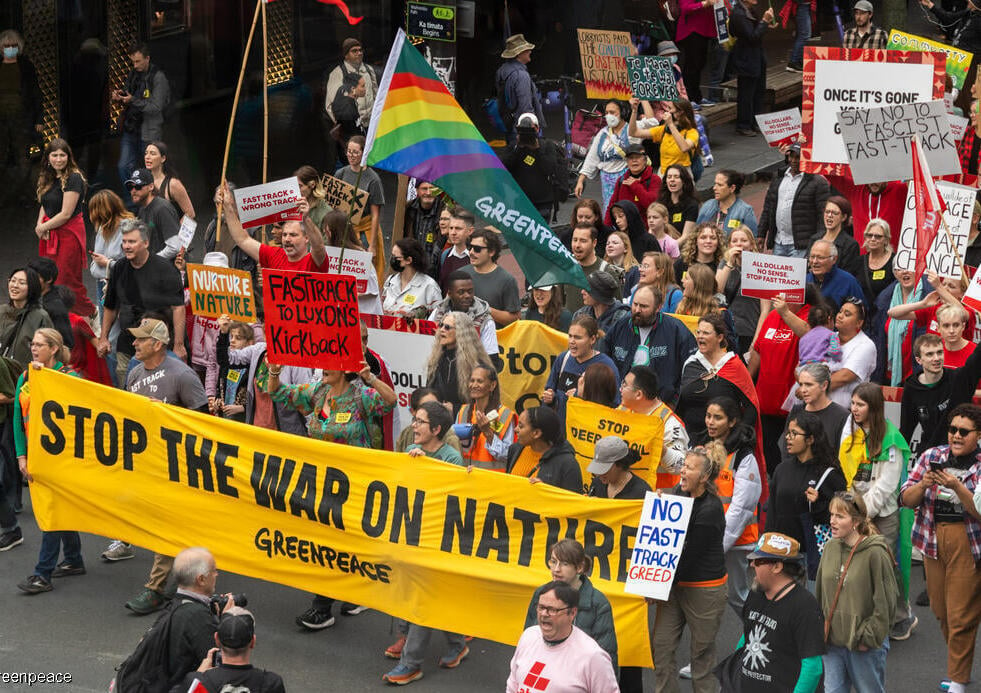
Since the 1980s, successive laws have been passed that have improved environmental protections, but the forces of environmental destruction have tried just about every trick in the dirty politics playbook in their efforts to overturn science-based environmental protections. Until recently, they had failed.
In the same period, the weight of scientific evidence has steadily built up, highlighting the urgent need to phase out fossil fuels and toxic pollution, end destructive mining, fishing and farming methods, and urgently shift to renewable energy sources, regenerative agriculture methods, sustainable fisheries management, electrified public transport, and a zero-waste circular economy that re-uses minerals and other non-renewable resources.
Increasingly out of step with the latest science, vested interests in the fossil fuels, mining, fishing, and farming sectors have lobbied political parties and governments to weaken or scrap environmental measures that curb their activities.
The new National-led Coalition Government clearly agrees with that view. It has decided to junk the Resource Management Act (RMA) along with a raft of other environmental protections. At the same time, a trio of ministers (Christopher Bishop, Shane Jones, Simeon Brown) have proposed a ‘Fast Track Approvals Bill’ which looks set to give some ‘pet projects’ a sweetheart deal.
The ‘War on Nature’ is hiding in plain sight behind the bogus fig leaf argument of ‘economic recovery’.
The coalition government’s short-sighted vision for Aotearoa now risks creating a new Mordor by laying waste to more tracts of forest and blasting out yet more mines, bringing back seismic blasting at sea and unleashing destructive mining of the seabed itself.
The Fast-track Bill was first introduced to Parliament in March 2024. A few months later Greenpeace, Forest & Bird and other groups organised a public march against it. More than 20,000 people gathered in Aotearoa Square, Auckland, on Saturday 8 June 2024 for the ‘March for Nature’ along Queen Street.
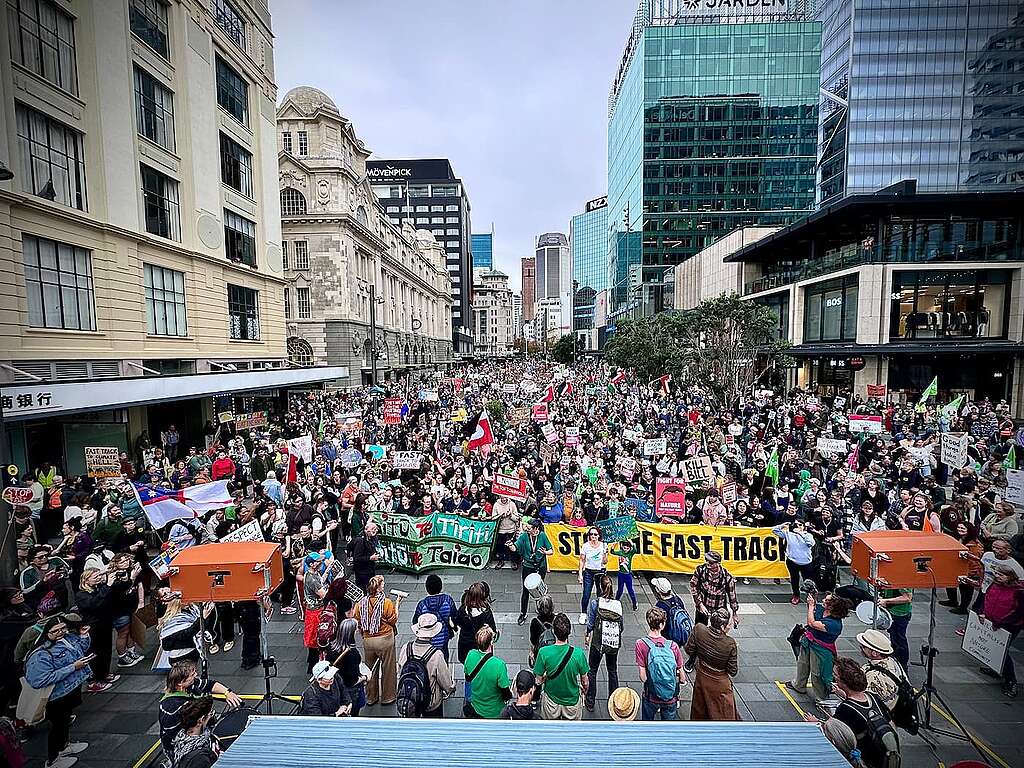
Environmental groups such as Greenpeace are not the only ones that oppose the ‘War on Nature’. Ngāto Toa Rangatira organised a hīkoi against the Bill outside Parliament on 8 May 2024. Seabed mining proposals have been vociferously opposed by mana whenua in Taranaki and new exploration for oil and gas has long been opposed by various Iwi around the country.
Te Tiriti o Waitangi
Greenpeace recruited its first wahine Māori executive director, Cindy Kiro (Ngā Puhi, Ngāti Kahu, Ngāti Hine) in 1992 to lead the organisation in Aotearoa (1992-94). In 1993 she became the first indigenous woman elected to the Board of Greenpeace International. Following a distinguished career in the tertiary education sector and as the New Zealand Children’s Commissioner, she was appointed a Dame Companion of the New Zealand Order of Merit in January 2021 and then in October 2021, she was appointed as the new Governor-General of New Zealand.
One of the first changes that Cindy Kiro made at Greenpeace New Zealand was to establish a new community organising arm of Greenpeace’s campaigns called Mana Tangata. She described Mana Tangata as a dedicated team with skills in environmental activism and education set up to “benefit communities wanting to solve both their own problems and those we all face” and “work alongside local communities to help make a difference and help make Greenpeace’s campaigns more relevant to local communities.”
During that period, Greenpeace had discussions about Te Tiriti o Waitangi with the staff and board of the organisation. Subsequently, a coalition of Iwi representatives in the Bay of Plenty including Pouroto Ngaropo (Ngati Awa), Tipene Marr (Ngati Rangitihi) and Tairua Whakaruru (Tuwharetoa ki Kawerau) called Te Tatau Pounamu o te Awa o te Atua (The Greenstone Door to the River of the Gods) formed an alliance with Greenpeace in 1996 to oppose ongoing toxic pollution of the Tarawera River from the giant Tasman Pulp & Paper Company factory in Kawerau.
Those relationships are not always visible, but they last. A decade later, when the campaign to stop deep sea oil exploration was launched, Greenpeace supported Iwi in the Bay of Plenty and other parts of the country during their campaigns to successfully stop new oil exploration at sea in their rohe.
Now, in 2024, at the same time that the National-led Coalition Government is busy with its ‘War on Nature’ and determined to pass its destructive ‘Fast-Track Approvals’ bill, the government is also undermining Indigenous rights through its ‘Treaty Principles’ bill. Greenpeace has been vocal in opposing the Treaty Principles Bill because it undermines Te Tiriti o Waitangi and the right of Māori to self-determination.
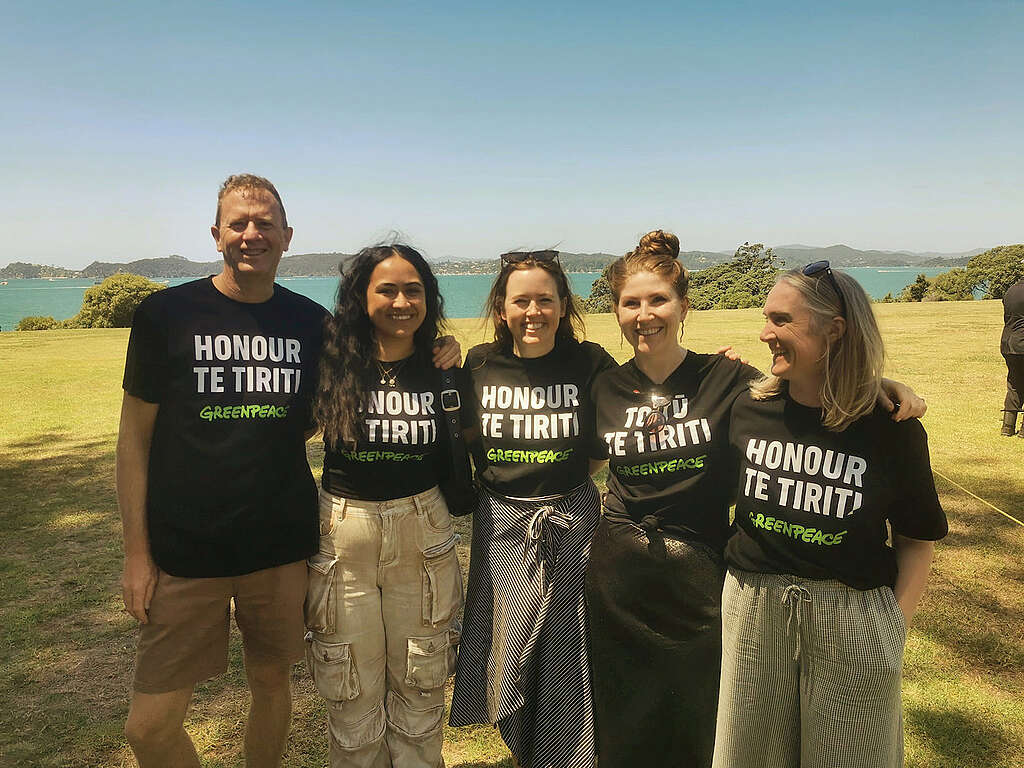
The recent Hīkoi mō te Tiriti (10-19 November 2024) showed how strong and widespread resistance to the Bill is from both Māori and non-Māori – Tangata Whenua and Tangata te Tiriti.
Greenpeace is now calling on its supporters to step up and protect Te Tiriti because it’s the right thing to do for people who call Aotearoa home and because it’s entwined with the Greenpeace mission to protect people and the planet. The forces aligning against Indigenous self-determination are the same forces that seek to gain unlimited access to exploit the forests, lands and oceans of Aotearoa.
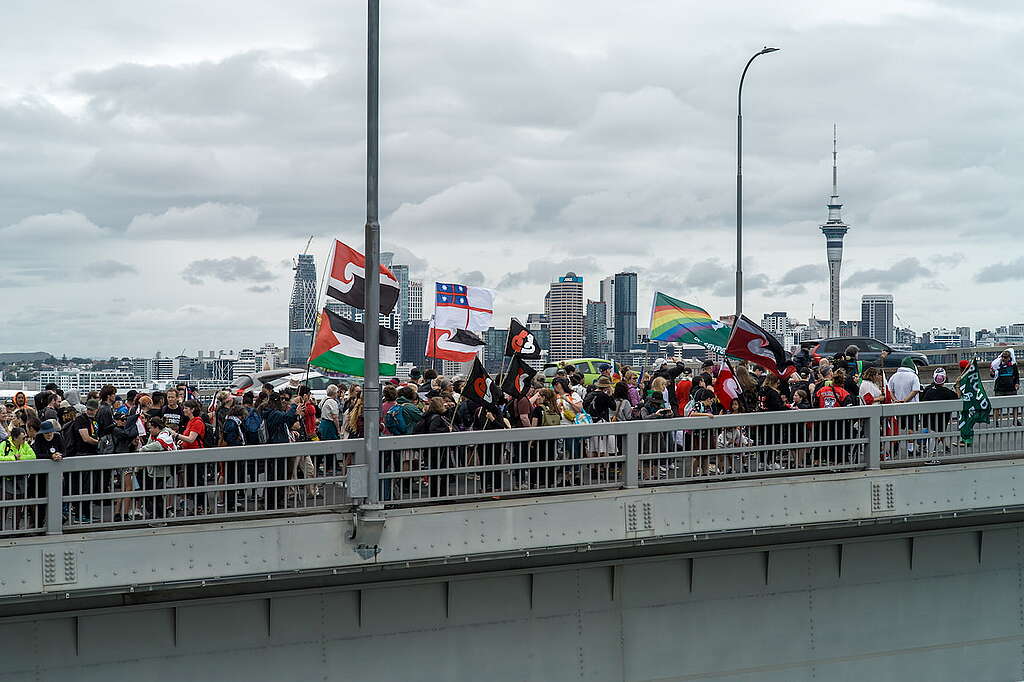
Greenpeace Aotearoa joined the Hīkoi and is making a submission opposing the Bill, both because it believes it is a grave injustice and because protecting Te Tiriti is entwined with Greenpeace’s mission to protect nature and peace.
50 years of wins for people and planet
So, 50 years on, how can the new government’s ‘War on Nature’ be countered most effectively, and what can be learned from our campaign victories of the past half-century?
Greenpeace’s creative use of boats and at-sea protest has been front and centre, from Aotearoa to Antarctica. Inherent in this has been a willingness to stand up for the planet against big polluters and bad policies – despite the overwhelming power imbalance – and to be prepared to take calculated risks when necessary.
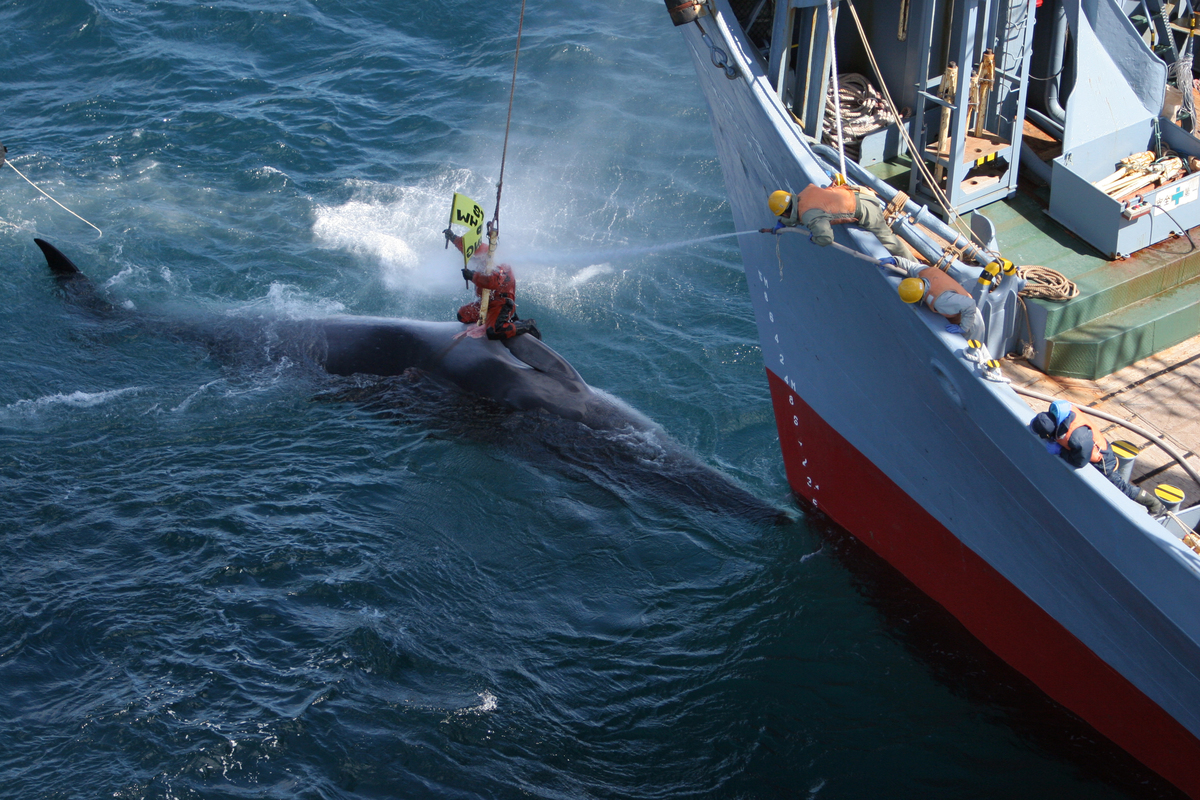
Think of a small Zodiac inflatable blocking a giant whaling ship from harpooning a whale or the person who leaped on to a whale that had been harpooned; an activist in the water blocking the path of a giant seismic blasting tanker; dozens of kayaks swarming to stop a new oil pipeline being built; a giant crate filled with cow’s urine blocking the entrance to a damaging irrigation scheme funder; or a climber locked onto a giant crane halting the delivery of a giant gas-burning turbine.
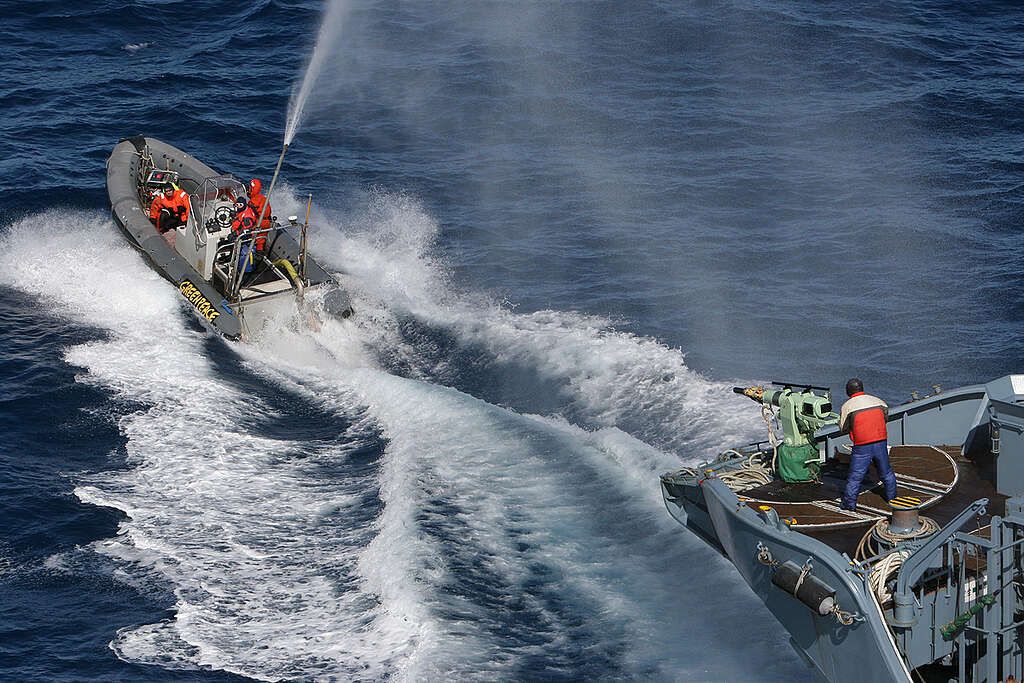
Greenpeace has also been prepared to sustain long-term campaigns that may sometimes span decades and to invest in building an enduring organisation that values the courage and idealism of its origins. Having an experienced, well-qualified staff to run its operations and boats has been essential. The successful campaigns to protect Antarctica and to ban nuclear testing, driftnet fishing and new oil exploration at sea all speak to that.
Greenpeace campaigners and activists have also needed to think ‘outside the box’ and to look past the ‘mainstream myths’ that help enable powerful and vested interests to continue polluting or destroying the environment. Being able to outwit state actors and outfox corporate polluters requires creativity and dexterity.
Think of ‘Ronald McDonald’ chaining himself up to block a GE feed shipment; a team of cyclists surrounding and halting a truck delivering diggers for a new coal mine; attaching a microlight glider onto a Zodiac inflatable so it can take-off from the water and fly over the commandos guarding a live nuclear weapons test site; or diverting polluted effluent from a pulp and paper factory and dumping it into the same factory’s clean water intake.
The ‘competition of ideas’ in society also matters. Greenpeace has sought to counter mainstream myths such as “humans are separate from nature”, “endless growth is good”, “the free market is the best way to organise the economy”, “we can consume our way to happiness”, “having bigger bombs makes us safer”, “businessmen are the best people to run our society”, and “technology is the only thing that can save the planet”.
These myths often misdirect attention away from the most important environmental problems the world faces. They can also promote fear-based thinking or indifference, and by disempowering people have helped to prop-up environmental destruction by gas-lighting alternatives, labelling them as hopeless or misguided.
In the ‘competition of ideas’, Greenpeace has sought to replace the old narratives around these six mainstream myths and to help create transformational change. Greenpeace’s alternative ideas – expressed through its campaigns – embody that struggle, in equal parts critique and solution. Think of the oil-free campaigns and embracing renewables as the solution, cutting the herd and embracing regenerative agriculture, rejecting plastics, and embracing zero waste resource recovery hubs.
Greenpeace has also had a knack for creative messages and reframing narratives and has prized the ability to communicate those new ideas in easy-to-grasp ways – through compelling images, catchy slogans, snappy memes and potent ‘mind-bombs’.
It has also been prepared to use biting humour to ridicule the destructive plans of polluters and their enablers – from an activist dressed as ‘Ronald McDonald’ to installing an oil industry museum at the New Plymouth headquarters of Austrian oil giant OMV as part of Greenpeace’s ‘Make Oil History’ campaign.
Another key factor is that Greenpeace is fiercely independent and refuses to take any donations from corporations or governments, which means protecting the planet has always been the top priority. Instead, Greenpeace is crowd-funded by its supporters and uses the funds to employ a passionate full-time staff and to maintain its boats. The contributions of tens of thousands of people can make the impossible possible. Ten thousand cups of water roaring down a stream bed can move a seemingly immovable rock.
Now more than ever
Greenpeace has been able to chalk up and contribute to an impressive list of wins for people and planet over the past 50 years.
With a new government that is hostile to environmentalism, some of the gains that Greenpeace has helped to make are now at risk.
This is precisely why we need Greenpeace now more than ever before.
People power has won campaigns before and can do so again – if enough of us stand together to defend nature.
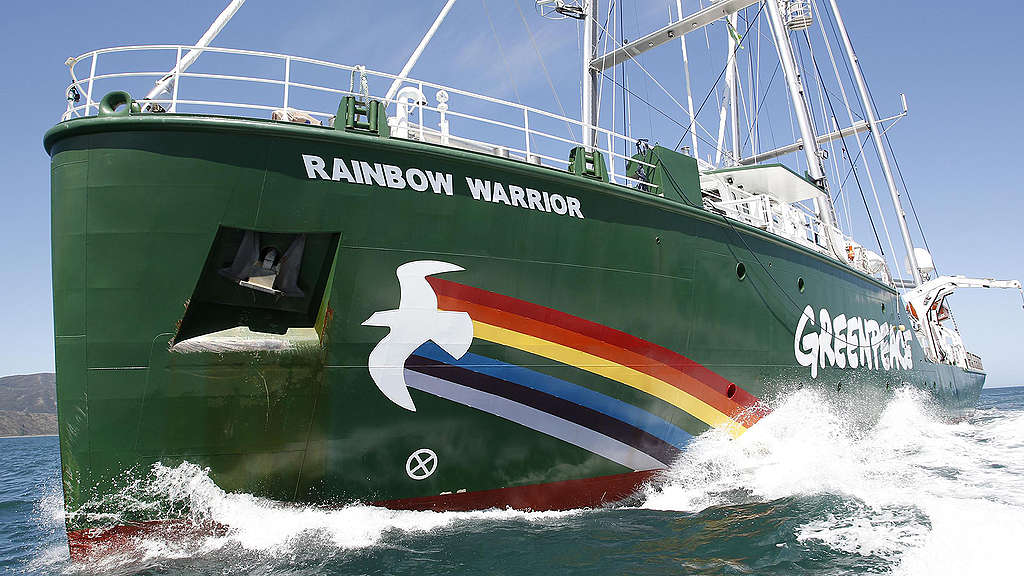
Take action for environmental protection. Please make a donation today. Greenpeace exists because this fragile earth deserves a voice. It needs solutions. It needs change. It needs action.
DonateMore reading
A timeline of campaign victories and milestones
Making Waves II – A history of Greenpeace Aotearoa/New Zealand from 1990 to 2020
Making Waves – the Greenpeace New Zealand story from 1971 to 1990



